2 Volumes
Culture: The Flavors of Philadelphia Life
Philadelphia began as a religious colony, a utopia if you will. But all religions were welcome, so Quakerism mainly persists in its effects on others, both locally and in America, in Art, clubs, and the way of life.
Sociology: Philadelphia and the Quaker Colonies
The early Philadelphia had many faces, its people were varied and interesting; its history turbulent and of lasting importance.
Cultural
Culture and Traditions (2)
Robert Adams, Jr.
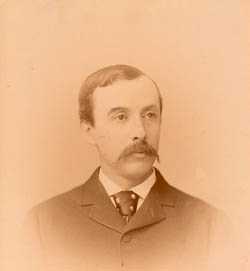
|
| Robert Adams Jr. |
The duel between J. William White, M.D and Robert Adams, Jr. stands as the last-known (April 10, 1880) duel in Philadelphia. The duel was actually fought in the "wedge" of 800 acres of disputed land that had resulted from faulty calculation of the original borders of Maryland, Delaware and Pennsylvania, thus establishing a convenient patch of lawlessness suitable for prizefighting, duels, and whatnot during the long period while lawsuits failed to resolve the geographical matters. Doctor White was much the more flamboyant of the two, so this duel is mostly attached to his name, but Adams seems to have been a person of some consequence, as well.
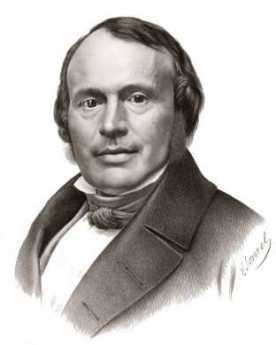
|
| Louis Agassiz |
The sketchy information available about Adams (which readers of this website are urged to supplement) states that he was a member of expeditions exploring Yellowstone Park at roughly the time when young White was a member of a famous expedition on the ship Hassler exploring the coast of South America with Louis Agassiz. Adams seems to have become a serious politician, acting as a Pennsylvania state legislator for a while, then Ambassador to Brazil for a couple of years, then a United States Congressman representing Pennsylvania's 2nd District. While a sitting congressman, he is said to have committed suicide because of financial losses due to speculation. Just what it was that made Adams and White such bitter enemies has long been unclearly wrapped in fanciful speculation.
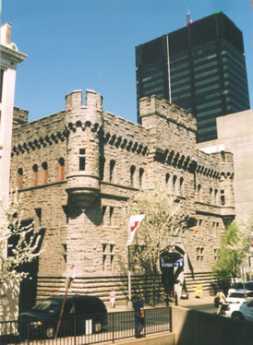
|
| Armory on 23rd Street |
A few years ago, the City Troop was off to Kosovo, leaving the Armory on 23rd Stree quiet enough for Captain Dennis Boylan to poke around in the archives. Here he discovered a pamphlet entitled Frock Coat, Pistols and Champagne which described the events with satiric cartoons, quotations from unsympathetic newspapers, and very likely a certain amount of disinformation. The suggestion is implied that the Troop had indeed declined at that time into a drinking club for useless aristocrats, but the reaction to this public uproar created a determination to restore the Troop to its former serious military and patriotic place, which it has enjoyed ever since. Although it may have been true for a period after the Civil War that the Troop was in decline, its performance before and during the Revolutionary War, and since the 1880 duel, has been one of a serious concern about the duties of privileged families, to lead the way in the sacrifices expected of public leadership.
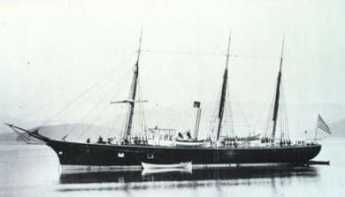
|
| ship Hassler |
As told by Captain Boylan, the lore of the subject suggests that Adams and White had disliked each other for a long time. There was friction about participating in the dedication of the Bunker Hill Monument in Boston, having something to do with who was to be on the right side of the governor of Massachusetts. There was further friction, not well defined, when the Troop was sent to Altoona to bring order to a labor dispute. And there is the question of a doctor wearing the Blue uniform of the Troop. The troop physician had always worn civilian clothes, but White was "ordered" to wear the uniform and it rankled Adams. Since White had been taught boxing by a prison inmate patient at Philadelphia General Hospital and is famous for his involvement in football and other contact sports, it seems likely there were some associated provocations left unrecorded. In any event, when Bill White died, his will left $5000 to the Troop to promote annual remembrance that he was the first troop physician to be ordered to wear the uniform. He left a similar amount to the Franklin Inn for an annual dinner in his name, so you kind of get the idea that he thought a lot of himself. Both men remained members of the troop for some years after the duel, so probably there was a reason to express continuing unworthy opinions of a comrade, in code.
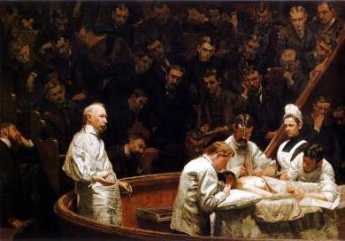
|
| The Agnew Clinic |
There's general agreement that White shot his pistol into the air, while Adams took careful aim -- and missed. In the view of soldiers, therefore, it is clearly true that White comes off looking the better of the two, and for two different reasons. White is the surgeon actually doing the cutting in Thomas Eakins" famous painting of The Agnew Clinic, was a friend of Henry James and Theodore Roosevelt, and became a Trustee of the University of Pennsylvania. But Adams was obviously a person of parts with a contingent of loyal supporters, and probably had an interesting story in his later years. If there is a moral to all this, it is likely to be that fame consists of a large degree of working hard to achieve it. Pick the right painter to do your picture, ingratiate yourself with famous people, and leave some money to institutions with a vigorous development office.
The unknown author of Frock Coat, Pistols, and Champaigne reaches a different conclusion. "Philadelphia, like old Rome, was not without its flock of geese."
Philadelphia Gardens
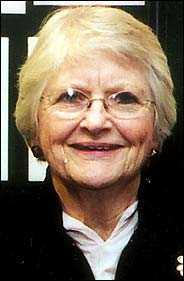
|
| Ernesta Drinker Ballard |
There are many show gardens, mainly on former large estates, scattered around the United States, and the ones on Southern plantations are quite famous.
However, the fact of gardening is that the climate has a lot to do with success. The really premier gardens of America are found in an East Coast strip from northern Virginia to southern Connecticut, with Philadelphia in the center of things. There is also a good-gardening area from Oregon to British Columbia, with a particularly notable garden in Vancouver, named after a sort of Philadelphian named Inazo Nitobe whose story is related in another blog. To have a really notable variation of exotic display plants, you need a lot of rain, a long cool spring, and a tradition of cultural association with the British Isles. Alkaline soils, generated by limestone, will produce a fine lilac display. Denmark would be a good place to go see that, but most of the show gardens in America are based on acid soils, with dogwood and azalea the predominant background coloration in May and June. A visitor from Michigan was once heard to ask what all the pink bushes were around Philadelphia, so it's likely the soil is not acid in Michigan. On the other hand, Korea is where wild azaleas originally came from, making the acid-soil hills crimson in the spring there. It should be noted in passing that Japan, Korea, and the Delaware Bay are on the same 40-degree latitude, but Japan escaped the loss of species caused by glaciers of the ice age.
Many of the Philadelphia suburbs have thousands of azalea bushes in each town, and hundreds if not thousands of pink and white dogwood, or purple Empress Trees, or magnolias. When you have a lot of those as background to start with, you are ready to begin planting a show garden. For that, we can largely thank John Bartram the botanist, one of the earliest Philadelphia settlers. The grounds of Friends Hospital are particularly notable for azalea display, and the Pennsylvania Hospital is pretty good, too. Although they are closer to Wilmington, the two most famous show gardens in the Philadelphia area are on DuPont properties, Winterthur, and

|
| Longwood Gardens |
Longwood Gardens, They feed you pretty well in the associated restaurants there, and the bookstores and gift shops are truly outstanding. But what in many ways is the best show garden in Philadelphia is Chanticleer, the former estate of a family that founded what is now Merck Pharmaceuticals, located in the suburb of Wayne, across the street from where Tracy Lord, the heroine of The Philadelphia Story, lived on two square miles of the Main Line.
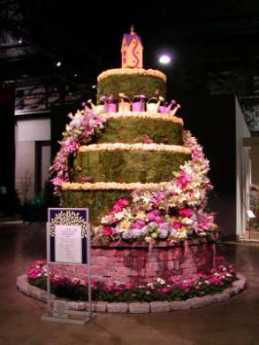
|
| Philadelphia Flower Show |
It's not clear why Chanticleer is such a well-kept secret, but it's sure worth the trip to see it at almost any season, May preferred. Interest in gardening is not limited to just a few big estates, it's a Philadelphia sport. Therefore it's not surprising to learn that the largest flower show in America is held in Philadelphia at Convention Hall in the Spring. If your feet aren't flat when you go in, they will surely be flat when you come out because a complete tour would be miles long, threading among the aisles. It's not easy to guess how much money each exhibitor spends on a display, but it's surely not a cheap hobby when you get to this level. If you notice the landscaping on public grounds in the city, it's always a fair guess that it was paid for by the profits generated by The Flower Show. Almost everybody has heard of the Burpee Seed Company, and Mr. Burpee summed up the prevailing attitude of Philadelphia gardeners: "If you want to be happy for a day -- get drunk. If you want to be happy for a week -- get married. But if you want to be happy for a lifetime -- get a garden."
REFERENCES
| Gardens of Philadelphia and the Delaware Valley William Klein Jr. ISBN-10: 1566393132 | Amazon |
Main Line School Night
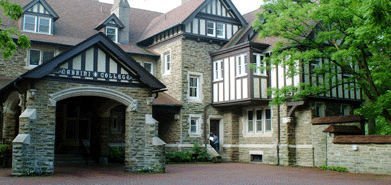
|
| Radnor |
There's a lot to learn from the Main Line School Night, and it isn't all taught in the classroom. The basic idea is life-long learning, going to school because it's fun. The idea started five or six decades ago in the Radnor, PA high school, that a lot of educated people wanted to become still more educated in topics of their own selection. No tests, please, and forget about academic credits; most of the students already have an excess of them. Forget about improving your income with advanced degrees; since this is Main Line Philadelphia, quite a few of the students already have all the income they could ever want. As related by the very low-key president of MLSN, David Hastings, the idea was an almost instant success. There were 1200 students enrolled for the second semester. They outgrew the original high school, and now teach courses in seven schools among 40 locations, to 14,000 students a year. There are 400 teachers in any given year, and the tuition charged is aimed at breaking even on the overhead. The academic world is inclined to say the courses lack rigor, by which is partly meant that if the students don't like the course, they walk out. Volleyball, yoga, and nutrition certainly do have a California sound, but computers, foreign languages, and science can be as difficult as you want to make them. If you get serious about contract bridge, you soon learn that isn't a simple child's game. Courses in wine tasting are given in the local senior citizens' retirement communities, but mostly not to the residents. It's not welcome to give that sort of course in a high school. To some extent, this continuing education is an exclusive social occasion, but then so is a course in diplomatic history at Princeton. Mr. Hastings tells of a group of sixteen ladies in a bridge course who have been coming for years, and have learned to close the course rolls by all sending in their checks on the day of registration. This is, after all, the Main Line where exclusionary techniques once learned are hard to forget. There are clouds on the horizon. In the past three years, enrollment has leveled off and declined a little. Almost no major corporation continues to be successful for more than seventy-five years, and many of the people running Main Line School Night are drawn from the Executive Service Corps. In retrospect, for example, the owners and editors of the Saturday Evening Post should have sold out and closed down, as soon as they learned the first million television sets had been sold. Perhaps the decline of enrollment of Main Line School Night reflects the advent of the Internet, or the cell phone, or some other new technological competitor. Or maybe the venture just got too big and successful to maintain its original format; perhaps it's outgrowing its blood supply. But anyway, they have 14,000 students and can be proud to be in a resting phase, when the rest of the city, or state, or country, hasn't even tried to get started on such a project.
The Savoy and the Orpheus
Much of the music in Philadelphia is world-class, produced by eminent professionals who command high salaries for their work. As a result of many years of striving, through unions and otherwise, it is getting a little difficult to afford all this talent and excellence. That's one reason there is so much amateur musical effort, although it must be admitted that a city which appreciates music will almost surely generate a lot of amateur effort, just for the love of performing.
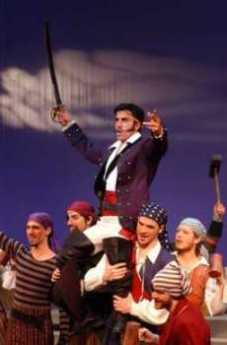
|
| The Pirates of Penzance |
The Savoy Company, putting on Gilbert and Sullivan operettas, and the Orpheus Club, which is an all-male choral society, were founded in Philadelphia around 1875. Both groups have little trouble attracting membership, although the members of the Savoy generally only perform for four or five seasons and then become inactive members. Members of the Orpheus commonly remain active members for fifty years, so it's harder for a newcomer to find a vacancy. Membership applications may possibly be enhanced at the Savoy by its reputation, deserved or undeserved, as a marriage market. At one time, fifty or more years ago, both organizations had a reputation for hard drinking, but during those days of Prohibition, many clubs served that function. Nowadays, alcohol is not a necessity with either of them.
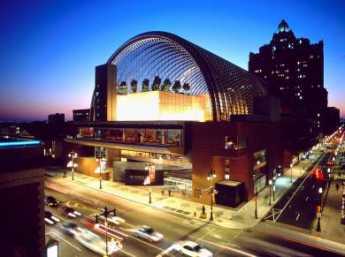
|
| The Kimmel Center |
The exceedingly high hall-rental costs of the Kimmel Center and the Academy of Music are getting to be a problem for these amateur groups. The Savoy is lucky to be invited to have two performances a year at Longwood Gardens, and neither organization has to contend with paying professional musicians like its commercial competitors. Many performers in the Philadelphia Orchestra donate their time for the Savoy, among whom William Kincaid the famous flutist was one of the most enthusiastic. Without this help, it's unlikely the organizations would survive. Certainly, it would be hard to distribute four tickets per performance to members of the clubs, while striving to keep membership high.
All of this is just one facet of the general dilemma that it is increasingly impossible to break even in the performing arts, by ticket sales alone. Many taxpayers are Luke warm about music and see no reason why they should support it with taxes, and philanthropists can be fickle. It's a delicate balancing act because philanthropists are easily infuriated by strikes, and politicians are seldom attracted by what may be called the finer things. When the economy turns sour, ticket-buyers flee.
WRTI, Classical Music and Jazz
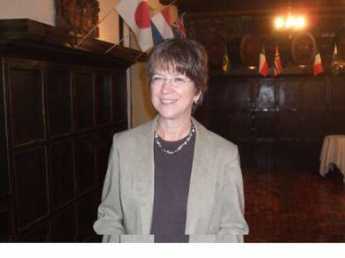
|
| Susan Lewis |
Susan Lewis recently entertained the Right Angle Club with a description of her life as the scriptwriter for WRTI, the local classical music station. WRTI could be described as one of three local affiliates of National Public Radio, the network content provider headquartered in Washington DC. The other two are WHYY, a talk station, and WXPN, the University of Pennsylvania station devoted to folk, rock, blues and root music. Another way of describing WRTI is that it took over the role formerly served by WFLN before it was sold, incorporating it into Temple University's jazz station. It plays classical music from 6AM to 6PM, and then plays jazz in the evening. Philadelphia thus really only has half a classical music station, when most cities who are home to a major orchestra have at least two. It is not clear whether this anomaly is a comment on the local radio climate or the future of its musical one.
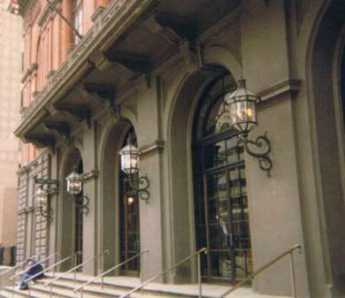
|
| Philadelphia Opera House |
The question came up as to just what is classical music since there are turf boundaries for the affiliates of National Public Radio. Susan Lewis, who has the surprising background of being a former corporate lawyer has apparently given this some thought. She offers the opinion that classical music overwhelmingly consists of music with multiple performers. Orchestras, opera, chorales, and chamber music characterize the topic more than pre-contemporary origins. A brand new symphony would naturally fall into the classical music category, while songs by Frank Sinatra would not, even though excited announcers might call his songs classics. Following this theme, classical music seems to fit with jazz, which consists of several soloists working on variants of a common theme. The sad question thus comes up whether Philadelphia's declining interest in classical music might in some way reflect social fragmentation within a metropolitan community which historically has highly valued cooperation and consensus. One hopes that's not the case.

|
| WRTI RADIO |
Playing a succession of recorded musical selections sounds as though it would be a low-budget operation, but WRTI costs $3.6 million to run, annually. The scriptwriter gets up early, reads the day's artistic news and events, and some auto traffic reports, and records one-minute vocal interludes between the pieces of music. About once a week, a special seven-minute segment is assembled from excerpts from interviews or interludes relating to a theme in the artistic world. One taped recording of carillon music and commentary proved to be quite charming and entertaining, including the news that the carillon in Holy Trinity Church is the oldest in America. Since a bell is a variant of a tuning fork, the bells of a carillon chime with a very long period of decay, creating a problem for both composer and performer to avoid successive notes which conflict unless there is a long pause. These magazine-like pieces of hers are always organized around a main emotional "hook" of some sort, and Susan finds they are very time-consuming to assemble. That leads to a constant succession of inflexible deadlines, just like lawyers' briefs before a legal deadline, generating an excitement strangely exhilarating to the participant, and highly mystifying to outsiders.
As the central focus for dozens of emails and text messages about the goings-on of the local artistic world, the job of town gossip for the art world is an ego trip only suitable for a person who revels, with affection, in the endless wealth of art and anecdote in Philadelphia. As bloggers also know, this job constantly surfaces interesting news tidbits that surprise and please many people. Like the fact that William Penn's hat on top of City Hall is filled with graffiti. Or that a secret colony of Lenni Lenape Indians still exists in town. Or that the forthcoming HP radio standard produces outstandingly high quality.
Ms. Lewis is an asset to our town.
www.Philadelphia-Reflections.com/blog/1521.htm
Cecilia Beaux, Portraitist of the Grand Manner
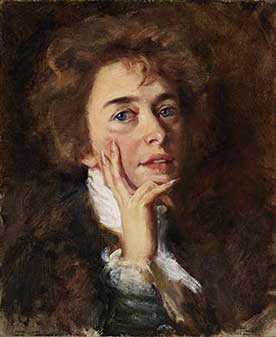
|
| Cecilia Beaux |
Cecilia Beaux (1855-1942) was certainly the most famous woman portraitist of her time. She had the misfortune of being a contemporary of Mary Cassatt, who enjoyed the reputation of the finest woman Impressionist at a time when the Art world disdained traditional painting techniques in an Impressionist stampede. So, although these two temperamental artists might never have been chums, much of their famous rivalry was probably invented for them by art world politicians.
In time, the assessment will emerge that these two well-born Philadelphia ladies were each the world's female leaders of two competing schools of art. Comparisons of the two will also have to be filtered through the fact that Cassatt was a rebel who spent most of her life in Paris, while Beaux was a prominent faculty member of the Pennsylvania Academy of Fine Arts for twenty years. Strikingly beautiful herself, she was gifted, elegant and fiercely ambitious. Meow.
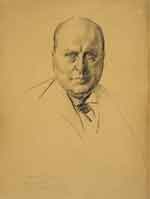
|
Once Beaux had established a reputation as a portrait painter, she shrewdly began to select her subjects. She wanted famous men (Henry James, for example) and beautiful women subjects. She made the mistake of turning down her niece, Catherine Drinker Bowen, because she didn't have the right kind of cheekbones. She learned, of course, that it's unwise to tell a famous author she is ugly.
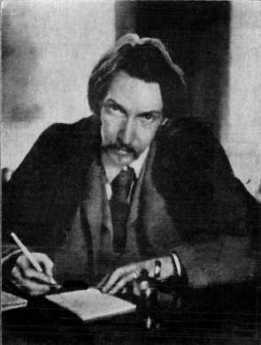
|
| Robert Louis Stevenson |
Cecilia Beaux's main competitor in the portrait game was John Singer Sargent, who was if anything a better painter but a stammering social dud. Sargent remained a life long bachelor, Beaux a spinster. Her mother had died in childbirth, and it seems likely that terror of pregnancy was an important part of her personality, during the pre-antibiotic era when such fear was fairly justified. As a young woman, she turned down proposals by the dozen, and in maturity, she had a succession of apparently platonic but intense relationships with handsome men twenty years her junior. During the late Victorian era, this sort of thing was not rare, although medical advances have apparently largely eliminated it. To return to her competition with Sargent, the personality differences probably account for his haunting portrait of Robert Louis Stevenson, while Beaux is notable for arresting portraits of rich, famous and beautiful women, and an equal number of well-dressed, handsome men.
Eakins and Doctors
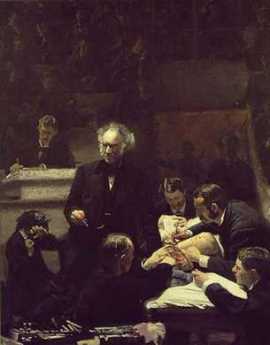
|
| The Gross Clinic |
A Christmas visitor from New York announced he read in the New York newspapers that Philadelphia's mayor had just rescued a painting called The Gross Clinic, for the city of Philadelphia. The Philadelphia physicians who heard this version of events from an outsider reacted frostily, grumpily, and in stone silence. To them, the mayor was just grandstanding again, and whatever the New York newspaper reporters may have thought they were saying was anybody's conjecture.
Thomas Eakins is known to have painted the portraits of eighteen Philadelphia physicians. Several of these portraits have been highly praised and richly appraised, seen in the art world as part of a larger depiction of Philadelphia itself in the days of its Nineteenth-century eminence. That's quite different from its colonial eminence, with George Washington, Ben Franklin, the Declaration and all that. And of course entirely different from its present overshadowed status, compared with that overpriced Disneyland eighty miles to the North. Eakins depicted the rowers on the Schuylkill, and the respectable folks of the professions, every scene reeking with Victorian reminders. It's a little hard to imagine any big-city mayor of the present century in that environment. Indeed, it is hard to imagine most contemporary Americans in a Victorian environment -- except in Philadelphia, Boston, and perhaps Baltimore. So, Mayor Street can be forgiven for not knowing exactly what stance to take, and was not alone in that condition.
S. Weir Mitchell, for example, became known as the father of neurology as a result of his studies and descriptions of wartime nerve injuries. But the repair of injuries is a surgical art, and many novel procedures were invented and even perfected, many textbooks were written. Amphitheaters were constructed around the operating tables, for students and medical visitors to watch the famous masters at work.
In The Gross Clinic, we see the flamboyant surgeon in the pit of his amphitheater at Jefferson Hospital, in the background we see anesthesia being administered. Up until the invention of anesthesia, the most prized quality in a surgeon was speed. With whiskey for the patient and several attendants to hold him down, the surgeon had one or two minutes to do his job; no patient could stand much more than that. After the introduction of anesthesia, it might overwhelm newcomers to observe leisurely nonchalance, but in truth, the patient felt nothing, so the surgeon could safely pause and lecture to his nauseated admirers.
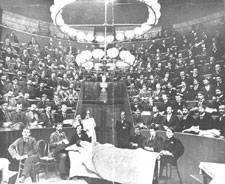
|
| Operating Amphitheater |
What made an operation dangerous was not its duration, but the subsequent complications of wound infection. By 1876, Eakins could have had no idea that Pasteur and Lister were going to address that issue in four or five years, making operations safe as well as painless. But his depiction of a surgeon with bloody bare hands, standing in Victorian formal street clothes, gives the most dramatic possible emphasis in the painting to the two most important scientific advances of the century. Modern medical students spend days or weeks learning the ceremonial of the five-minute scrubbing of hands with a stiff and somewhat painful brush, the elaborate robing of the high priest in a sterile gown by a nurse attendant, hands held high. The rubber gloves, the mystery of a face mask and cap. In some schools, the drill is to cover the hands of a neophyte with charcoal dust, blindfold him, and insist that he scrub off every speck of dirt that he cannot see before he is admitted to the operating theater for the first time. If he brushes some object in passing, he is banished to the scrub room to start over. So the Gross Clinic has an impact on everyone who sees the surgeon in street clothes, but it is trivial compared with the impact that painting has on every medical student who has been forced to learn the stern modern ritual. For at least fifty years, that painting hung on the wall facing the main entrance to the medical school, where every student had to pass it every day. To every graduate, the lack of clean surgical technique by the famous man was a wrenching sermon on every doctor's risk of trying his utmost to do his best, but doing the wrong thing.
That painting, hanging quite high, was rather cleverly displayed to the public through a large window above the door. With clever lighting, every layman who walked along busy Walnut Street could see it, too, and it became a part of Philadelphia. That was a feature the medical community barely noticed, but it was probably the main reason for public uproar when a billionaire heiress offered the school $68 million to take the painting to Arkansas. The painting was not just an icon for the medical profession, it had become a central part of Philadelphia. Philadelphia wanted to keep that painting for a variety of reasons, and one of the main ones was probably a sense of shame that we were so poor we had to sell our family heirlooms to hill-billies.
The doctors didn't pay much attention to that. They were mad, plenty mad, that a Philadelphia board of trustees would appoint a president from elsewhere who would give any consideration at all to such an impertinent offer.
French Philadelphia
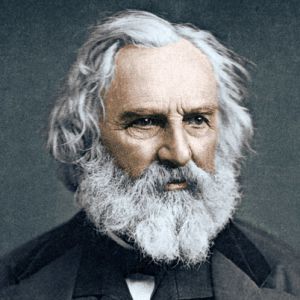
|
| Henry Wadsworth Longfellow |
Since American relations with France are a little strained at the moment, it may not be completely welcome to hear it said that Philadelphia food is Creole. The reference is not to the several downtown French restaurants of outstanding quality, but to the two episodes when Philadelphia experienced waves of French immigration. The first of these was during the French and Indian War, when the Acadian French ("Cajun") were driven out of Nova Scotia, largely went to Louisiana and then were allowed to return. A lot of them stopped off in Philadelphia both going and coming. Henry Wadsworth Longfellow depicted, in his poem Evangeline, the tearful reunion of Evangeline and Gabriel in the hospital. And since for sixty years the Pennsylvania Hospital was the only hospital in the country, Longfellow had to put them here.
The second wave of French immigration was provoked by the guillotine in Paris, and the black revolution in French Haiti. Most people today are unaware that Talleyrand lived here, and LaRochefoucauld. The Duke of Orleans, future king of France, lived at 4th and Locust Streets, proposed to a (rich) Philadelphia lady, and was rejected by her father ("Sir, if you do not become king of France, you will be no match for her, and if you do become king, she will be no match for you.") Napoleon's brother Joseph lived at 9th and Spruce, and one of his marshals lived at 6th and Spruce. Really. Talleyrand had a deformed foot, and this somehow made him pals with Governor Morris who had a wooden leg. This friendship was part of the reason the Louisiana Purchase was possible, because they shared the favors of the same French lady, and had frequent occasion to meet. Both Franklin and Jefferson were ambassadors to France, it may be remembered, and for a while, Jefferson was quite a fan of the French Revolution, although the treatment of LaFayette by the French Revolutionaries did not exactly encourage that. The French treated Franklin like a God, but then so did Mozart and the King of England, and Franklin harbored many bitter memories of the French and Indian War all the while he was romancing the French into bankruptcy to pay for our revolution. The French refugees from Haiti brought Yellow Fever with them, and Dengue too, thus definitively terminating Philadelphia's hope of remaining the permanent capital of the nation.
It was during this Francophone period that Philadelphia cuisine acquired some characteristics which allow some food historians to call it Creole. Philadelphia Pepper Pot soup, for example, substituted tripe for terrapin. Those who know about these things say that many dishes now thought to be distinctly Philadelphian in fact had a French origin.
The Garden Show Evolves
Adam Levine, who is the unofficial authority on the Philadelphia garden scene, has written elegant books about The Flower Show, and about the larger gardens in the region. At a recent luncheon meeting at the Franklin Inn, he traced the evolution of the Flower Show.

|
| The Pennsylvania Horticultural Society |
The Pennsylvania Horticultural Society was founded in 1827, and it organized the first Flower Show in 1829. For a century it was only an amateur display, very similar to the sort of local garden club display found in many towns and villages in England. The timing of such shows is dictated by the booming season of the flowers of the region, so the display depends on the dates of the local flowers, related in turn to soil and weather conditions. In the early part of the Twentieth Century, W. Atlee Burpee became the dominant force in the Philadelphia show. The show established a long tradition of domination by seed companies and nurseries, with elaborate displays which often took a week to set up, preceded by months or years of planning. The central difference in the nature of the Philadelphia show was that plants were forced into bloom, so much of its impact depended on displays which were seemingly entirely out of season. After World War II, Ernesta Ballard became the moving and controlling force, driving The Show into enormous popularity in the new larger quarters at Convention Hall. Considerable revenue was generated and used to beautify Philadelphia. The Show became the biggest, best, most popular and best funded flower show in America. Ernesta was a success.
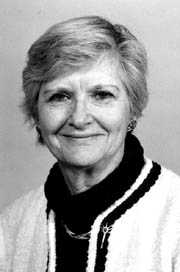
|
| Mrs. Ballard |
Gradually, the most elaborate or dominant displays were put on by florists, using cut flowers. That was not necessarily Mrs. Ballard's original intention, although it might have been. It is the nature of plant nurseries to take away a ball of topsoil when they sell a plant, and that tends to dictate the location of the major nurseries in places where farmers are willing to ruin the land for farming, looking to speculate on suburban development. They thus are usually rural or exurban, because prime farmland is too expensive. Obviously, nurseries are pressed outward from the rim of the expanding city, and may even be forced to locate at a considerable distance away. These realities of the business tend to diminish the local loyalties of the nurseries and the city to each other. Mainly, cut flower arrangements resisted this trend by using greenhouses, but air freight has now made it possible for exhibitors of live plants to come from the Netherlands, Peru, and even Korea. The Flower Show is still held in Philadelphia, but it is much less a product of Philadelphians, especially amateur Philadelphians. When large single exhibits now can cost $100,000 apiece to organize, it is not surprising that the Philadelphians who do exhibit, are members of the upper crust.
And then there are those unions. While upper crust exhibitors can afford to pay full union wages for an electrician to plug in one electrical outlet, they are instantly offended by the whole featherbedding experience of being forced to do it. And since a great many blue collar union members are hostile to any suggestion that these gentleman farmers are in any way their social superiors, they can display what is known as an attitude. Philadelphia is famous for aggressive unions, and the Convention Center is additionally notorious for unions with political clout. Somehow, the politicians in charge of this unfortunate passive-aggressive scene get control of it and are seen to get control of it. After all, snooty exhibitors are occasionally in a position to move whole factories out to the suburbs, to the general injury of the city; moving a flower show wouldn't be too hard to do. The paradox is that 70% of these union members live in the suburbs themselves. The Flower Show cannot run without the enthusiastic help of 3500 volunteers, easily turned off by muscling them. The judging is done by 175 volunteer judges from all over America, coming to Philadelphia at their own expense, for example.
The Flower Show has had memorable moments. There was a time when the Shipley School consistently won most of the prizes. There was a famous episode when the Widener Estate of Linwood had a world-famous Acacia display. When it was broken up, there was an uproar when it was given to Washington DC, instead of staying right here where it belonged. Now, the gossip is about exhibitors from Ukraine, or from Japan, making little laughable mistakes about local geography with many streets named One Way.
The Show goes on and thrives. But just what its future is going to be is unclear. The Convention Center has doubled its space, but whether it can double its business is uncertain. And the management has recently changed from leadership which had a focus on the show and regarded city beautification as something to do with left-over profits, to leadership with a primary interest in the beautification of the city. No business will thrive if it neglects its revenue stream. So, please be careful with our nice Flower Show.
REFERENCES
| Standardized Plant Names: American Joint Committee on Horticultural, Frederick Law Olmsted | Google Books |
The Man Behind the Mann
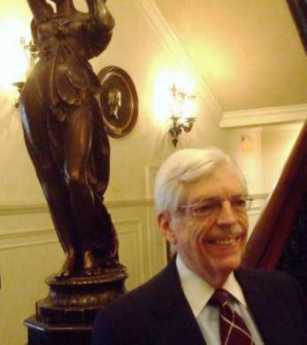
|
| William Leonard |
William Leonard, a distinguished lawyer retired from the distinguished firm of Schnader, Harrison Segal and Lewis addressed the Right Angle Club recently about his adventures running the new and improved Mann Center in Fairmount Park. A member of the board, he was suddenly asked to act as interim CEO when Peter Lane went on to another career. His task was to hold the organization together, while a permanent replacement was recruited. It turned out that directing an organization and actually running it are two entirely different things. It was necessary to learn about show business programming, the problems of rock groups, the whims of donors, the headaches associated with food vendors, and lease renewals with city governments, not to mention the rigidities of state and federal rules. Leonard obviously enjoyed the challenge, although most of us wouldn't.
The Philadelphia Orchestra had been playing summer concerts in the park since 1930, eventually adopting the name of Robin Hood Dell, East. Although the city contributed a couple hundred thousand dollars of support, and several hundred thousand other dollars came from non-ticket sales, classical music was always a long way from breaking even. The big revenue came from Rock Concerts, which may have been humiliating for the classical musicians of international fame, but was nevertheless what it took to survive, take it or leave it. Fred Mann in 1976 took the lead in raising funds for a roofed outdoor performance center, and the enormous energy of Peter Lane was brought from the New York Pops to get things going. In ten years, the Mann Center increased its outside support to $2.8 million of the $8 million annual budget and was putting on forty performances a season, with attendance increasing by 20% from 2006 to 2007. All this was accomplished in spite of the city government dropping its contribution to zero, and dropping music courses in the school system.
In a sense, the city stringencies may have been a blessing for the Mann. A second capital campaign raised $15 million for expanded facilities and parking, as well as an education center, to meet the new community need. A complimentary ticket program distributes 50,000 free tickets yearly, and seats on the lawn cost $10. If you want to get under the roof, it costs more. The free program familiarized parents with the program, and the educational center is now thriving.
Mr. Leonard brought along the new CEO, Cathy Cahill, and it looks as though he made a good choice. She's only been here for 19 days, but she went to Temple and Drexel before taking jobs out of town. She's a cellist herself, which should ease labor relations somewhat, although the pep and enthusiasm are surely innate. We hear that SEPTA is planning to re-open the R-5 station, and jitney bus service for the whole Park complex will be shared with the Please Touch Museum and other new activities in the 1876 exhibition area. There are plans for a Shakespeare repertory group to have a home here. This drive and enthusiasm are going to be necessary because Rock Groups are now competing in the Wachovia Center, and the Tweeter Center in Camden. Apparently, the secret of classical music finances leaked out.
www.Philadelphia-Reflections.com/blog/1479.htm
German Origins of the Philadelphia Orchestra

|
| academy of music |
The histories of the Academy of Music and the Philadelphia Orchestra are distinct but intertwined. At the moment, the Orchestra owns the Academy, but it was not always so. The Academy of Music of Philadelphia was built in 1857, but the Philadelphia Orchestra was not founded until 1900, just for instance.
It is undeniable however that Philadelphia orchestral music began its present direction with the German immigration wave of 1848, bringing with it the new musical concepts of Felix Mendelssohn. Except for the wedding march which has sent innumerable brides down the aisle, most people now have a little trouble naming a piece of music written by this composer, but in fact, he produced twenty to fifty pieces a year from 1820 to 1847. In terms of pure virtuosity, Mendelssohn was probably the most prolific and gifted composer after Mozart. His lack of really notable productions has sometimes been attributed to his wealthy childhood and too-easy success, but in his day he was nonetheless a musical revolutionary with an enormous following.
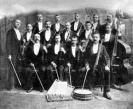
|
| Musicians |
One of the orchestras in the Mendelssohn tradition was the Germania Orchestra which moved to Philadelphia but had trouble getting accepted, and disbanded. The members of the orchestra scattered and eventually reformed a Philadelphia Germania Orchestra, which largely took over the place and some of the members of the disbanded Musical Fund Orchestra, struggled for a few years, became part of Henry G. Thunder's Orchestra, which in turn was almost entirely taken over by Fritz Scheel's Philadelphia Orchestra. Even with this thoroughly local name, the Orchestra struggled for a few years, and would quite likely have dissolved into still other formulations, until the local Women's Committee took matters in hand. Leadership was provided by Fanny Wister, sister of Owen Wister the novelist, and granddaughter of Fanny Kemble. From that time on, particularly from the day of the hiring of Leopold Stokowski as a conductor, the Philadelphia Orchestra has pressed forward, and never looked back.
Curtis Center
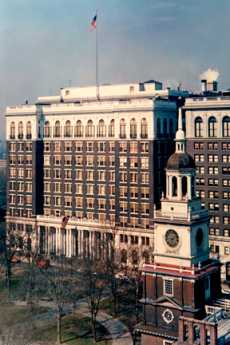
|
| The Curtis Center |
Tell your taxi driver that the Curtis Center is between 16th and 18th Streets on Locust, and not at 6th and Walnut. The big building next to Independence Hall is the former site of the Curtis Publishing Company, where all the money was made with the Saturday Evening Post. The Curtis Center is the present home of the Curtis Institute of Music, founded in 1924 by Mary Louise Curtis Bok with the advice of Leonard Stokowski, and with the determination to make it the best school of music in the world. The big competition, then as now, was the Juilliard School in New York, which is considerably larger. The New York competitor has the advantage that it sits on top of the Metropolitan Opera House within Lincoln Center. The Curtis, however, has a trump card; no student pays tuition, and the school tries to provide assistance for other costs of the students. Because of Juilliard's location closer to many performing arts centers, it can draw on a larger pool of commuting students and faculty, and is probably considered the top choice by the talented pool of applicants. But Curtis is gaining; only two of the accepted applicants from last year's class of 48 students chose to go to another school.
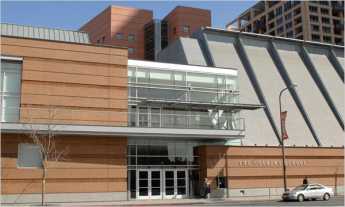
|
| Colburn School of Music |
In this fiercely competitive game, the school which is coming from the rearmost recently is the Colburn School of Music at UCLA. Not only does Colburn have Mr. Colburn's declaration in his will that he wanted to make it the "Curtis of the West", it is also heavily supported by Universal Studios, and has the additional advantage that Oriental students are flocking to the United States for musical training, and there are, of course, a lot of them. The previous director of Curtis is invited to China every year at the expense of the Chinese government, just to listen to what Chinese students sound like. It's sort of like inviting the college admission officer to your home to listen to your children describe their extra-curricular talents, but that's the way things are in the highly, highly competitive world of music. Running schools of music are no exception to that; don't forget music schools named for Peabody and George Eastman, and Boston's New England Conservatory of Music. Definitely a hobby for a person of means.
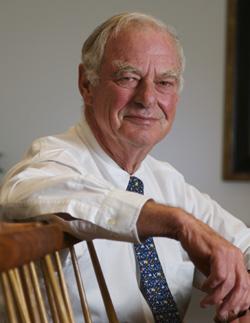
|
| Gerry Lendfest |
Like Gerry Lendfest, the Chairman of the Curtis Board. On his own, he bought the old Locust Club property and the two neighboring houses, and gave it to the Curtis if they would pledge to raise $35 million to fit it out. That's been done, and there is now a big hole in the ground across Locust Street from the Wannamaker Chapel of St. Mark's Church. The plan is to construct a five-story building on Locust Street in conformity to the wishes of the Planning Commission, but the building will rise to the level of a 9-story building on Latimer Street. Somewhere tucked in there will be an orchestra rehearsal center, a library, and many instrumental practice halls. Plus a dining room for everybody in the school, and about 85 dormitory rooms for students. Mr. Lendfest is obviously a keen competitor in the music school game.
The school has 85 faculty members for 165 students, half of whom come from overseas, and are male/female 50%. An occasional student is seven years old, in the style of Mozart, and every single student knows that just about every other student is just about as talented as he/she is. The test of it all is the careers of the students, who quite naturally fill up many of the places in the Philadelphia Orchestra. Famous graduates are Leonard Bernstein, Samuel Barker, Juan Carlo Menotti, Ephraim Zimbalist, and many others. There's little doubt that the original idea was to bring Central European music to America, but two world wars and the relentless pressures of outstandingly talented students have broadened the horizons to a modern vision of the future of music. One particularly significant development is the laying of fiber-optic cable from Temple to the Kimmel Center, and a planned branching to the Curtis Center. That's the new and improved Internet II, which will make virtual conducting of virtual orchestras all over the world a possibility. Keep tuned.
Geckos: Academy of Natural Sciences brings Mini Dinosaurs

|
| Gecko |
FRIENDS who spent time in Vietnam have a lasting memory of lizards stuck to the ceiling, catching flies with their tongues. Those animals are named geckos, one of the oldest and probably most varied families of reptiles, but confined to the Southern hemisphere. Fossils have been found containing geckos from fifty million years ago, so they were here before the big dinosaurs were wiped out, when the Yucatan was probably struck by an asteroid.
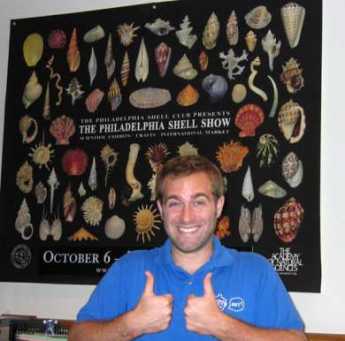
|
| Anthony Geneva |
There was a time when Africa, India, South America and Antarctica were united in one monstrously big continent, and the many varieties of gecko are scattered over the land masses which originally made that up. At least this is the way Anthony Geneva explains it to visitors to the Academy of Natural Sciences at 19th and Ben Franklin Parkway. There are no geckos to be found naturally in Philadelphia. Philadelphians hardly need reminding that the first dinosaur bones, ever, were discovered in Haddonfield NJ, and were soon taken to the Academy for permanent display. Ever since that time, the Academy's collection of dinosaurs has expanded, and are the things with the most impact on school-age visitors. The Academy is getting ready to celebrate its 200th anniversary in a few years, however, and contains much more than dinosaur bones, including extensive research facilities with world-famous scientists at work in them. In any event, the dinosaur image is a clear metaphor for the present display of little reptiles that look like dinosaurs, whatever the DNA trail may be. The main exhibition area is currently filled with dozens of glass display cases containing live geckos, and the little rascals are so good at camouflage that you have to hunt carefully for them before they suddenly seem to emerge from the shadows. There are white ones, black ones, bright green and bright orange ones, speckled in all sorts of weird patterns. They make sounds resembling bird songs, and the term gecko is a native word referring to such sounds. The Academy displays these gecko-noises for visitors who are invited to push twenty or so buttons. Geckos move, but suddenly, and probably for some predatory purpose. If you are really into geckos, you focus on their feet.

|
| Gecko |
The variety of toe and foot shape is almost infinite and seems more so if you have a magnifying lens. The foot pads terminate in different kinds of extremely fine hairs, and that's their big secret. Those hairs are so fine the molecules of the foot and the molecules of the wall or ceiling attract each other magnetically. Since no energy is expended in the adherence, the gecko can remain attached to a wall or ceiling indefinitely, even after the gecko dies. But, by raising the angle of contact to thirty degrees, the foot detaches, and the little rascals can scoot along very rapidly, upside down. At present, there is a great deal of commercial and maybe military interest in clarifying the secrets of this adhesion. To be industrially useful, the footpad size would have to scale up to much larger dimensions, but just imagine gluing together the vessel ruptures and aneurysms inside the brain as we now do in a cumbersome manner with chicken-wire stents, just one example that quickly occurs to a visitor. If these little fellows figured out how to make these reversible adhesives fifty million years ago, our scientists ought to be able to imitate them.
Drop around to visit the Academy. It's filled with amazing things like this.
Plays and Players, Haddonfield Version

|
| Haddonfield Plays and Players |
First, an anecdote from my own lurid past. When I went there, Yale was an all-male institution with one exception, the Drama School. It's true that Shakspere had boys play the part of women in his plays, but Yale evidently felt that was going unnecessarily far, and had thus let the nose of the female camel get under the all-male tent. Meanwhile, I had discovered that a course in Advanced Chemical Engineering was carrying my amateur interest in chemistry sets a long way too far, and after two weeks, I wanted out of it. Out!
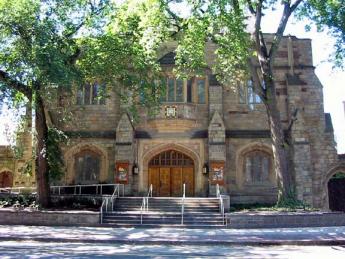
|
| Yale Drama School |
The Dean was sympathetic until I answered what I wanted to transfer into -- a course at the Drama School. Somehow, he felt that was immensely amusing, one he hadn't heard before. But, finding my grade average satisfactory, he gave a big wink and signed the paper. I didn't pretend to be offended, but I did pretend to be solemn. The experience subsequently served me very well, since that class of girls went down to Broadway at the same time I went down to New York to medical school. Almost none of my mostly all-male class of medical students knew any girls in New York, but by comparison, I knew lots. It made me very popular with both groups.
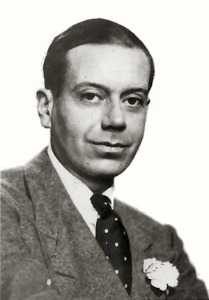
|
| Cole Porter |
It thus develops that I had the courage recently to accompany to a theater party in Haddonfield, a lady who had spent twenty-five years on the stage. The play was Cole Porter's Anything Goes, put on by the Haddonfield Plays and Players, a group celebrating its 75th year of productions. You seldom see musical comedies anymore, because the large cast and orchestra requirements are pushed by Union rules to the huge expense which a professional group cannot safely risk, and amateur groups mostly cannot enlist a large enough audience to support. In addition to the orchestra, stagehands, and administration, I counted thirty members of the cast up on the stage for the big chorus numbers. There might have been a hundred in the audience to pay the bills. This wasn't the only play of the season, there will be five I understand, so the performers have to be quick studies, which generally means considerable experience. Even with what therefore must have been a short time to rehearse, this group was good, really, really good. The lady by my side remarked these people must be semi-professionals, at least. I didn't think so, so she demanded a playbill to see. Sure enough, semi-pro.
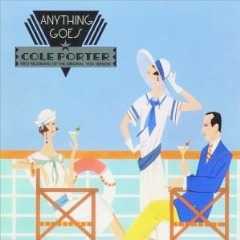
|
| Anything Goes |
All of which may seem a round-about way to get to an observation about the current theater revival in Philadelphia. There are at least fifty new amateur theater groups scattered throughout our region, filled with "kids" having a wonderful time playing Shakspere, Albee, Shaw and whatever. At cast parties, almost none of them expresses any interest in going to Broadway or Hollywood; they are mostly software engineers or similar. Since the Philadelphia revival of interest in performing arts is so striking, it has led to ruminations about why the theater similarly flowered in Elizabethan London, at a time when there were only two theaters in Paris, by comparison. Perhaps this parallel has something to teach us about the hidden social impact of Sir Thomas Gresham and dual coinage, or Sir Francis Drake and the Armada.
But maybe, I realize for the first time, there is a flight in our direction, from New York City.
Benjamin Franklin, Prophet
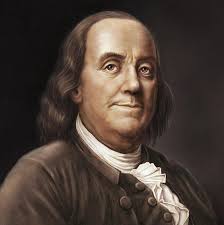
|
| Benjamin Franklin |
Judged by his public and private writings, Franklin was a deist. That is, he believed God sort of wound up the Universe like a clock, then let it run by itself. Furthermore, the Constitution0 which he had a hand in writing, pretty clearly maintains a wide separation between church and state. Nevertheless, historians by the droves have identified a uniquely American culture, apparently based on some fiercely held convictions. We might just as well say America has a secular religion with prophets, and Benjamin Franklin was an early prophet. His enduring message for all time was: Honesty is the best policy.
By this he did not mean, as lawyers do, strict word precision, or as our military academies add, resolute avoidance of half-truths and double-talk. Ol' Ben never admitted who the mother of his illegitimate son was, and positively chortled at hoodwinking the Pennsylvania Assembly into matching private contributions for the nation's first hospital, which he secretly knew he already had in hand. Late in life, he set enduring standards for the American diplomatic service, which some have defined as a profession dedicated to lying for your Country. Not only was Franklin rather sly, he gleefully projected the image of slyness. In recent years, some historians have proposed his adventures with many women were just acting out a playful pose. Frankly, this suggestion is hard to accept.
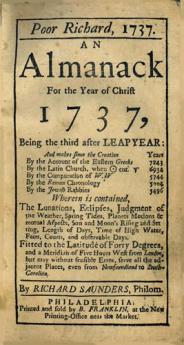
|
| Poor Richard Almanack |
The author of Poor Richard's Almanack, aged 26 at the first edition, was a young man totally consumed with advancing himself in the world; at that stage, he defined himself as a businessman. Like J. Pierpont Morgan, who could thunder "I will never do business with a man I don't trust", Franklin had one set of principles for business and another for love. Or, if you please, one set for men, and another for women, who were thought to play by their own set of rules. Historians have struggled with this paradox or hypocrisy, but it would have seemed strange even to comment on it in Franklin's era, and a conflict is not suggested in eighty volumes of his life writings. Lord Byron, another famous philanderer of the day, stated the matter delicately as "Man's love is to man's life a thing apart; 'this woman's whole existence." And that was just the way it was, in their view.
Franklin, who as an escaped apprentice might well have been punished like a felon in Boston, came to the big town to make his fortune, found himself ina culture of Quakers. Boston Puritans might well have punished him severely, or at least stood by approvingly while his brother beat the daylights out of him. The Dutch in New York were well known as rough customers; just to the south in Delaware, the inhabitants were to maintain a whipping post for two hundred more years. But in Philadelphia, non-violence was eventually carried to the extreme of confining miscreants to solitude until they spontaneously perceived it really was better to behave. Poor Richard's little motto about the best policy was in fact just the Golden Rule, applied to business. Even today, anyone starting a business soon finds a discouraging number of people ready to cheat the businessman; it was even truer in colonial America. Somehow, if you enter the business world, it is to be assumed you are ready to defend yourself. Competitors have little respect if you fail to conduct business warily; even less if you complain and wiper. Although many women have conducted successful businesses, it is so to speak a man's world. Little Benny Franklin, fresh off the boat from Boston, watched with amazement as Quaker merchants and vendors conducted trade on the assumption the counterparty was honest, refused to bargain an openly set price, and avoided violence when cheated. At the same time, Franklin could not fail to notice that Philadelphia was prospering much more rapidly than Boston. After a business trip to England, he could see that London worked at the same disadvantage as Boston. Honesty, it would appear, makes you rich; cheating may sometimes work, but fairness gets you ahead more steadily.
In later years, Franklin shared rooms with John Adams, who became positively livid at the suggestion a person should be honest for any other motive than to be taken into Heaven. It was degrading, even dishonest, to be honest in order to get rich. There is no evidence that Franklin's reaction to this sermon was anything but contempt for the other man's intelligence. Although probably not directly related to this exchange, Franklin's assessment of Adams was "always an honest man, often a wise one, but sometimes and in some things, absolutely out of his senses." Ben Franklin was born in Puritan Boston, fled from it as soon as he could, and thereafter seldom regarded Puritans as having two feet on the ground.
It thus emerges that Benjamin Franklin who was certainly no pacifist, greatly admired Quakers. On the one hand, in desperation he organized Pennsylvania's first militia when in 1730 the Quaker Pennsylvania government refused to act against French and Spanish marauders in Delaware Bay, and in 1752 took the lead again in assisting the British against Fort Deliquesce during the French and Indian War while Quakers resigned from government rather than defend the state. He even volunteered to go to London to lobby against the Penn family. None the less, Franklin was completely converted to Quaker principles of doing business, perceiving a deep underlying truth to them. Honesty, as suggested by the Golden Rule, or fair trade as they say in commerce, is the key to prosperity. Honesty is not just good advice for a young man, it is a principle which brings prosperity to a whole nation, while readily suggesting a clear simple explanation of why it should. Don't you want to be rich? Plenty of other people want to be rich.
Unfortunately, many kings, barons, confidence men, bullies, cheaters, and tough guys have also become rich. Generations of immigrants have come to our shores with the idea that life is a zero-sum game. The way to get money is to take it from someone else. The way to lose money is to give a sucker an even break. But gradually, one generation after another learns the truth, as enunciated by Poor Richard, that everybody is better off if almost everybody tries to be honest.
Surely it is not too much to say that American adventurism in the rest of the world reflects exasperation that the rest don't get the point. Certain parts of Europe, and all of the Mideast, really doubt it will work for them. The Far East does seem to grasp the rudiments, although with inscrutability and all it's hard to be certain. It isn't even true that all Americans get the point, but we have a containment policy for them, based on the fragile belief that here we outnumber the zero-summers. You must be firm, but you must also be fair. The crippled old Franklin hobbled out the door of Independence Hall after the Constitutional Convention. A woman calling to him asked what sort of government had been given us. "A republic," he answered. "If you can keep it."
Children's Scholarship Fund (1)
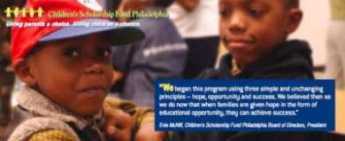
|
| Children's Scholarship Fund of Philadelphia |
Ida Lipman recently visited the Right Angle Club, to acquaint members with the nature of the club's new charity, the Children's Scholarship Fund of Philadelphia. This fund could be seen as a response to the rising realization that the nation's leading social problem is fast becoming one of upgrading the educational strength of the current generation of poor people, who face hopeless odds competing for unskilled jobs against a vastly larger population of foreign poor people in a globalized economy. Our poor people can never hope to rise out of poverty by taking jobs that foreign competitors are willing to perform at even lower wages. And while everyone hopes our poor people can take on better-paying jobs, it requires better education to do it. Ultimately, the question for America is whether to place the emphasis on better teaching or better learning, and the two are not quite the same thing.
The educational problem of motivating children to higher attainments than their parents is a difficult social task in both urban and rural districts, but self-defeating peer pressures to hold down their classmates somehow seems a stronger force in the urban settings. In both environments, of course, the educational attainments of both the parents and the teachers have been aimed at a lower level than the task requires. It somehow proves unrealistic to shift expectations as rapidly as we need to, and part of the present problem is that the education industry has become demoralized by repeated defeats. Consequently, we are certainly lucky that philanthropic donors have been willing to support some radical experiments in the whole educational experience, including students, teachers and parents.
Thus, the Children's Scholarship Fund has been willing to dispense several thousand scholarships to private schools in the Philadelphia region, purely by lottery, without regard to the traditional guidepost of student merit. This policy would probably be disruptive if scholarships were universally available, undermining the spirit of meritocracy which is so central to our educational system. But since we are only partially addressing the failures of a system of universal free public education, a stronger argument can be made that changing the culture occasionally requires that we set aside the traditional incentive of rewarding the behavior we seek. The hope is that a demonstration project with such a radical change will set other motives into motion. Resources are limited; it is recognized that among the ninety percent of students who fail to receive the scholarship by lottery, there will be many who are more talented than the few who are lucky enough to get an award. The point is easily overlooked however that scholarship students must apply for this lottery, and be supported by partial financial assistance from their parents. These parents must sincerely want to raise the educational goals of their children, and convey that motivation to the kids in whatever way they are able to convey it. The pressure of less lucky playmates and neighbors to hold them back, it is hoped, will be lessened by the simple recognition that a lottery gives everyone an equal chance, provided only that they step forward and pledge themselves to try to succeed.

|
| John Walton of the Wal-Mart family |
It's a bold and imaginative approach, a highly counter-intuitive one. John Walton of the Wal-Mart family matches the contributions of other donors at fifty cents on the dollar through his family foundations, which was jointly founded with Ted Forstmann of the Wall Street firm. Many longitudinal studies will eventually show how much this bold and charitable venture really helps the students and the community; since it is private money in use, criticism should be held back until the results begin to be apparent. To whatever degree and in whatever way the scholarship fund is a success, the public must be willing to praise both its spirit of generosity, and its willingness to take a chance. Let's all mark this down in our notebooks, to see how it all turns out in ten or so years.
Christmas Reflections
My father in law, a prominent obstetrician in Binghamton, New York, regularly took his family to New York City sometime between Thanksgiving and Christmas. The three-day junket was described as a visit to do Christmas shopping. Another relative made similar trips from home in Tyler, Texas. Several of my patients made such visits to Philadelphia from their homes in West Virginia, stopping by to make a medical visit to me during the same trip. From the seasonal crowds in Penn Station and in the shops on Chestnut Street, it was clear that an annual visit to the big city was a common custom in the upper crust of small to medium-sized cities, for whom the more expensive shops of the bigger city provided big-ticket items bought infrequently, and the distinctive luxuries which made them stand out from the socially less-enlightened back home.
These shopping visits were not confined to purchasing, although that was the main focus. It was a time to go to the theater, orchestra and opera, maybe an occasional ballet and art exhibit. The choice of a large city might be related to returning to the University, or another period of professional training for a drop-in visit because these associations made it possible to observe the latest trends and innovations, a useful issue in the smaller towns. The ladies could observe the trends in fashions, and everyone would have a chance to dress up in the better hotels and restaurants. This recirculation between the small towns and the big one at the hub unified the region, establishing hierarchy rather widely. And it hardened traditions in the big city, since islanders tend to return to the same hotel, restaurants and social gathering spots even more than the local residents do; there isn't time in a brief visit to shop for new venues, unless the trip itself reveals that times and places have somehow changed in an important way.
 |
| Wannamakers Pipe Organ |
That's all changed, today. The pipe organ at Wannamakers, the cluster of department stores around Eighth and Market, the theater district, Caldwell's and Bailey Banks and Biddle upscale jewelers, the fancy women's clothing shops on Walnut and Chestnut Streets, and the bespoke men's tailor shops -- have disappeared in a slew of retail despond. The excited crowds of upscale shoppers have dwindled, at least in the center city shopping area. Students of sociology point to the decline of the department store as a central commotion in the center of this phenomenon, blaming that in turn on the spread of national brand names by television and more electronic forms of advertising. The department store did your comparison shopping for you, putting its brand name on the product and placing its reputation behind the choice. If Wannamaker could determine that a Japanese radio was of high quality, it became Wanamaker's radio. Today, Samsung and Sony do their own advertising, sell their products through outlets in the suburban malls. Philadelphia residents enjoy as much retail choice and pricing as ever, they just shop in the malls located along the Interstate circumferential highway, just outside what used to be the outermost suburbs. So the volume of retail shopping among Philadelphians probably hasn't changed a great deal; it has merely shifted to the malls where there is parking for your car to transport goods which the department stores used to deliver. It is the annual visits from the subordinate small cities at moderate distance that has disappeared. Small cities now have their own shopping malls, carrying national brand name merchandise. Losing this source of business, the associated entertainment industry has declined to a point below sustainability for most of them -- in the center city hub. Along with the disappearance of this regional recirculation, small cities have lost their sense of affiliation with a bigger one. The small-town professional class which was the biggest participant in this annual migration is professionally more isolated but so are their clients. The upper crust of the small town now must constrain its horizon to the smaller town professionals, with their lesser claim to distinction. For a while, the disparity can be overcome by specialization, but ultimately the distinction of the big-city specialist rests on assembling a richer experience from wider drawing power. In Medicine at least, the insistence of Medicare on paying the same fee for the same service lessens the economic incentive for self-repair of the system.
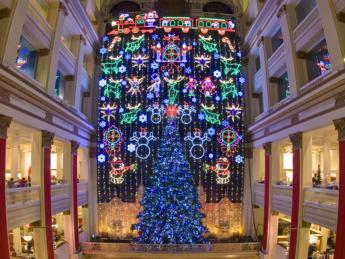 |
| Wannamaker's Christmas Light Show |
Meanwhile, nature of Christmas itself is becoming standardized. Fewer people make their own Christmas presents, whether through knitting or baking. If the process of commercial gifts goes the full distance, eventually the joy of searching for exactly the right gift will seem more like paying your taxes. These things already cost too much, are worth too little, and neither the process of giving a gift nor the process of receiving a welcome gift will retain much joy. Or significance. What was until recently a Christian religious celebration has become diversified into a generic "Happy Holiday", presumably in order to avoid offense to other religious groups who themselves likely persist in their old traditions of ritual greeting. The assault on Christmas is however not primarily cultural, but commercial. The silent ostentation of elaborate outdoor lighting and the secular versions of Christmas carols endlessly replayed over loudspeakers in stores, probably have a more destructive effect on the community winter solstice ceremony than any competition for religious adherence.
The coming next step in the modification of the Christmas season is dimly visible in the assault of pocket telephones on the suburban shopping mall. After enjoying only a few years of victory over the center city department store, malls must now confront shoppers with portable telephones containing a camera and GPS geographical locator. Seeing something he likes, the shopper of the future can photograph its bar code in the shop display, and be immediately told of all the neighboring stores which sell the same product for a lower price. Electronics are thus about to turn Christmas shopping into an electronic auction, no doubt making it eventually easier to do the shopping from home.
What Christmastime means to me is a recollection of what it once was like at the nation's oldest hospital, and not so terribly long ago, at that. Before 1965, the Pennsylvania hospital had been staffed for centuries with unpaid student nurses, working under the direction of unpaid doctors in training, supervised by volunteer attending physicians. Of the five hundred beds, only forty were filled with paying patients and the rest were housed in long communal halls. On Christmas morning at 7 AM, the drowsy patients were astonished to be awakened by a procession of very pretty student nurses, led by Miss McClellan the grim-looking Directress of nursing, and followed by a handful of internet and residents, all singing Christmas carols and carrying lighted candles in the dark. Miss McClellan herself was never heard to utter a note, but the student nurses had been trained in four-part harmony, and the interne doctors were enthusiastic followers. The faces of the poor old indigents in the beds were filled with pure delight as we traipsed past, chanting of the travels of Orient kings, the pregnancy of virgins, and other miracles of the occasion.
Puritan Boston & Quaker Philadelphia
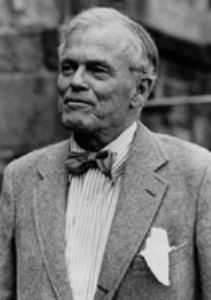
|
| Professor Digby Baltzell |
Digby Baltzell had something of the defiant rebel in him. He surely didn't imagine his employer, the University of Pennsylvania, was pleased to have him a document that Harvard is a better college than Penn. Nor were fellow members of the Philadelphia Club pleased to confront scholarship that his city's gentry was too devoted to money-making to accept the ardors of public leadership. Nor would his relatives in the Society of Friends enjoy accusations their religion impaired the pursuit of excellence in all fields of the city's endeavor. Later articles will here take up some unfair assaults, and defend Quaker simplicity and Peace Testimony. Some blame must, of course, be shared, some mitigating circumstances acknowledged. And let it be said in Baltzell's support that it truly is remarkable how many cultural features do get passed down for ten or more generations. Or even longer; look at the persistence of ancient Chinese, Indian, Esquimo, Viking, Roman, Christian and other cultural heritage. The Quakers got to Pennsylvania early, they are now vastly outnumbered. Many Quaker ideas continue to influence present inhabitants, some ideas probably hold us back. Substitute "Puritans of Boston" for "Quakers" in the foregoing sentence, and conclude by saying "some of those ideas probably give Bostonians an edge". Those two rather unexceptional declarations summarize a controversial book, although they do not completely capture its overall censorious flavoring.
To a certain extent, Digby is his own worst enemy. While alive, he was one of the world's most charming raconteurs, a walking encyclopedia of local lore. Like a good docent in a museum, he could walk into a room hung with portraits, and charm any audience for an hour; presumably, his sociology lectures at Penn held the same magnetism for his classes. In a book for popular readers, however, it is overdone to go on about the same point for six hundred pages. He needed a better editor, or perhaps he needed to permit a better editor to make him restrain his tendency to multiply illustrations beyond the point where the reader loses the thread of the argument. Not all readers will agree with his argument; they can only be legitimately defeated by focused argument. That's perhaps unrequired of college professors holding the power of grade-point averages over nineteen-year-olds, but it is expected of conversation with other adults. If an editor wants to sell books to a general bookstore audience, he should induce authors to overcome the take-it-or-leave-it habit.
As a general reaction to this book, Baltzell seems to think Quakers do not want to be rich and that consequently, latecomers into the region tend to share this feeling. My own view is that Quakers see they can have almost all of the value of being moderately rich -- by disdaining the trivial luxuries of the middle classes. They do not exactly renounce fame and power but are unwilling to gamble much or sacrifice much, in order to enjoy the comparatively small exhilaration of being very rich. They are now no longer surrounded by junior versions of themselves, but by bank-robbing Willie Suttons who readily attack Quakers for being where the money is, and appear to be pushovers at that. When Quakers then promptly demonstrate they are not pushovers at all, they are treated like outsiders in their own town. In many ways and at most times, the populist crowd gives up trying to understand Quakers and decides they must somehow always behave in ways that others would not. It's hard to achieve much deference in such an environment.
Many of Baltzell's important insights grew out of his position as a Philadelphia and academic insider; he personally knew many of the people he described. However, such an infiltrator runs the constant risk of being viewed as a tattle-tale, so a cover is required. Batzell's technique involved frequent use of quotations from others, not so much to prove a point as to rephrase it. This is another feature of the book which might have benefited from a hard-nosed editor. However this is how he wanted it, and in a post-publication revision, here is a condensation of how he summarizes his argument:
When studied with any degree of thoroughness, the economic problem will be found to run into the political problem, the political problem, in turn, run into the philosophical problem, and the philosophical problem itself to be almost indissolubly bound up at last with the religious problem.
--Irving Babbitt
In the South, ....left-wing Quakers came to the fore in the pine barrens of North Carolina-- to this day, North Carolinians speak of their state as "a valley of humilities between two mountains of conceit."
--E. Digby Baltzell
The world is only beginning to see that the wealth of a nation consists more than anything else in the number of superior men it harbors.
-- William James
I believe that ambitious men in democracies are less engrossed than any other with the interests and judgments of posterity; the present moment alone engages and absorbs them...and they are much more for success than for fame. What appears to me most to be dreaded, that in the midst of the small, incessant demands of private life, ambition should lose its vigor and its greatness.
-- Alexis de Tocqueville
Our rulers today consist of a random collection of successful men and their wives. ....They have been educated to achieve success, but few of them have been educated to exercise power. Nor do they count with any confidence upon retaining their power, nor of handing it on to their sons. They live therefore from day to day, they govern by ear. Their impromptu statements of policy may be obeyed, but nobody seriously regards them as having authority.
--Walter Lippmann
Equalitarians holding...extreme views have tended to believe that men of great leadership capacities, great energies or greatly superior aptitudes are more trouble than they are worth.
--John W. Gardiner
In the Jacksonian era in this country, equalitarianism reached such heights that trained personnel in the public service were considered unnecessary...Thus, in the West, even licensing of physicians was lax, because not to be lax was apt to be thought undemocratic.
--Merle Curti
In the late eighteenth century we produced out of a small population a truly extraordinary group of leaders-- Washington, Adams, Jefferson, Franklin, Madison, Monroe, and others. Why is it so difficult today, out of a vastly greater population, to produce men of that character?
--John W. Gardiner
It is nevertheless certain that the high quality of Virginia's political leadership in the years when the United States was being established was due in large measure to those very things which are now detested. Washington and Jefferson, Madison and Monroe, Mason, Marshall, and Peyton Randolph, were products of the system which sought out and raised to high office men of superior family and social status, of good education, or personal force, of experience in management: they were placed in power by a semi-aristocratic political system.
--Charles S. Syndor
Another clue to the relationship between hierarchy and leadership is suggested by Gardner's list of the Founding Fathers. All of these men were reared in Massachusetts or Virginia; none was reared in the colony of Pennsylvania, though Philadelphia was the largest city in the new nation and contained perhaps the wealthiest, most successful, gayest, and most brilliant elite in the land. Not only had Pennsylvanians little to do with taking the lead in our nation's founding, but the state has produced very few distinguished Americans throughout our history...I shall concentrate here on the commercial cities of Boston and Philadelphia, whose great differences in leadership and authority were far more likely to reflect differences in ideas and values.
--E. Digby Baltzell
Whatever else ...America came to be, it was also an experiment in constructive Protestantism.
--H. Richard Niehbur
All this is only to say that man is a product of his history, where nothing is entirely lost and little is entirely new.
--E. Digby Baltzell
For the wine of New England is ...more like the mother-wine in those great casks of port and sherry that one sees in the bodegas of Portugal and Spain, from which a certain amount is drawn off each year, and replaced by an equal volume of the new. Thus the change is gradual, and the mother wine of 1656 still gives bouquet and flavor to what is drawn in 1956.
--S.E. Morison
New Englanders, ambitious beyond reason to excell.
--Henry Adams
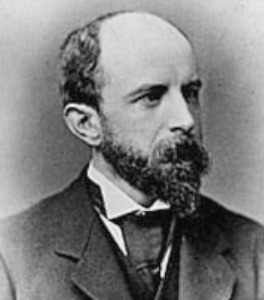
Henry Adams Pennsylvania became the ideal state, easy, tolerant and contented. If its soil bred little genius, it bred less treason. ... To politics, the Pennsylvanians did not take kindly. Perhaps their democracy was so deep an instinct that they knew not what do to with political power when they gained it; as though political power was aristocratic in its nature, and democratic power a contradiction in terms.
--Henry Adams
The reproach I address to the principles of equality is that it leads men to a kind of virtuous materialism, which would not corrupt, but would enervate the soul, and noiselessly unbend its springs of action.
--Alexis de Tocqueville
In our egalitarian age of mistrust, trustworthy men of great ability are increasingly refusing to run for public office or to serve in positions of authority and leadership in our society...In the rest of this book, I shall try to show how and why the Quaker city of Philadelphia, in contrast to Puritan Boston, has suffered from that virus of virtuous materialism for almost three centuries and how its best men, on the whole, have seldom sought public office or positions of societal authority and leadership outside business.
--E. Digby Baltzell
REFERENCES
| Puritan Boston and Quaker Philadelphia: E. Digby Baltzell. ISBN-13: 978-1560008309 | Amazon |
Urban Transportation
Stuart Taylor, who spent twenty years working for the Pennsylvania Railroad in the company of our member Bill Brady, recently gave the Right Angle Club his observations about urban transportation, which grew out of his second career as a consultant. As he describes the evolution from the horse-drawn omnibus carriage to the horse-drawn trolleycar, to the steam-driven trolley, to the electric trolley, to the underground subway, certain parallel historic movements occurred to at least one member of this audience.
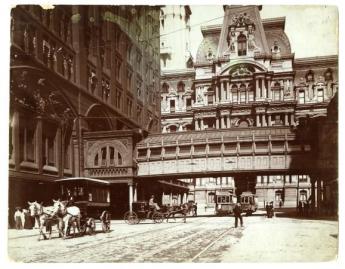
|
| Horse-Drawn Trolley Car |
In the first place, mass transportation is only of value when cities grow to a large enough size to justify the expense. And the growth of cities in the 19th Century was propelled by the Industrial Revolution attracting mass immigration into urban centers. Whether the Industrial Revolution is over or not, is a topic which could be debated, but it was the gasoline engine which made buses and autos attractive, and the decaying slums made cities sufficiently unattractive to cause the flight to the suburbs in the 1920s and 1930s, heavily resumed after World War II in the 1950s. During the heyday of city growth, the evolution of mass transit seemed to be driven by technology, and that in turn attracted private ownership. When the gasoline engine and/or the decline of the Industrial Revolution made the Flight to the Suburbs possible, it made urban transportation unprofitable and hence unattractive to private business owners. Somewhere just before or after the 1929 Crash, the changing situation made it more attractive to live and/or work in the suburbs. A sign of this change in dynamics was the total disappearance of private ownership of public transportation and its supporting infrastructure, and replacement by public ownership and public tax subsidy. As local politics began to reflect this change, Urban politics somehow became dominated by Democrats, and Suburban politics became dominated by Republicans; so the enthusiasm for mass transit has waxed and waned as the political domination of federal subsidies has shifted between the parties. That's probably only an outward sign, however. The real issue is that urban transportation now has to be subsidized since its base has shrunk to the point where people like Widener and Elkins invest in other things. And do so from their homes in exurbia, where the neighbors could care less about subways, let alone pay taxes to subsidize them. And until the city gets control of its crime, public schools, and taxes, it's hard to see what will attract them back in town.
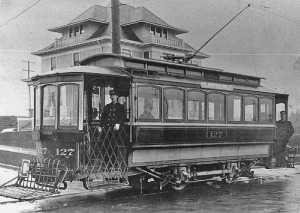
|
| Electric Trolley |
That's perhaps an overly censorious view, coming from a resident of the suburbs. A more economic view of things would be that the construction of underground subways now costs about a billion dollars a mile. Very few cities and no private entrepreneurs can justify costs of that magnitude since the potential ridership cannot afford the costs per ride which are implicit in that capital expenditure. Until the cities can manage to entice the suburbanites back into town, those people will solve their air pollution problems by avoiding the cities. Living to the windward seems much more plausible to them. China is just beginning this process, but they have the advantage of building the subways first, then the surrounding skyscrapers, and thus greatly reducing the costs of avoiding underground sewer systems, etc. If you could call it that, the Europeans had the advantage of massive war destruction, along with much more expensive farmland to inhibit suburbanization. None of this is an argument that we shouldn't build subways, or clean up the atmosphere. It's just a warning of the daunting construction costs and staunch political opposition to mass transit. Not to mention featherbedding, over-hiring, massive hidden benefits costs, and other features which seem to be inherent in union activity, at least of the historical variety.
A member of the Right Angle audience asked the speaker what he thought of the proposed Market Street light rail line. Insane, was the answer. No visible ridership. And that seemed to summarize the present debate.
Except that it really shouldn't frame the argument for Philadelphia. Philadelphia doesn't need a mass transit network, it already has a mass transit network. Much of it is growing obsolete, but the land costs and local opposition to change are greatly diminished when the network is already there. If any city can do it, Philadelphia can. The technology will surely evolve enough for our purposes if the money is there, and the money will be there if people return to using the city. What Philadelphia needs is a return of business headquarters and other sources of employment, bringing the ridership and the public demand along with it. And for that, what is essentially needed is for government to address our problems of uncontrolled crime, inferior public schools and maladministered taxes.
Paying for College I
It's almost two platitudes that during the Nineteenth century America changed from a largely agricultural nation into a largely industrial one. And toward the end of the Twentieth century, we are going on from an industrial economy toward a service economy. This latest shift of direction is one of the main causes of soaring college tuition costs. Demand for first-class college education grows faster than price increases, competition, and internal efficiencies can seemingly control.
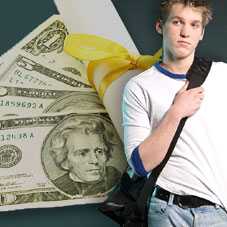
|
| College Cost |
Tuition costs at the top of the educational pecking order have now reached $52,000 annually, with room and board and other costs sometimes adding another fifteen thousand. Attending college already costs well in excess of the average after-tax income of working Americans, perhaps even in excess of the average income of college graduates. College costs regularly exceed the disposable income of undergraduates' parents and must be temporarily subsidized while the nation collects its wits, but subsidy cannot be a permanent solution to a problem so large. Average incomes of college graduates do exceed the average income of those who only finish high school. That extra income is gamely said to justify the investment, even taking into account the invisible loss of 4 years of earnings, perhaps even a trailing six-figure indebtedness. However, a meaningful score can only be toted up in retrospect, after inflation and taxes work their way into a net-net appraisal. Faith in some postulated answer to this accounting puzzle colors various belief systems, like: How much should we worry about widening income gaps between any income segments? What is the particular value to society of income redistribution between those who pay full tuition and those who receive financial aid?. There could be legitimate questions about many other values throughout the whole system. During the Vietnam War, many uncomfortable questions were raised about the educational system, even leading to riots on college campuses. It was often implied that many students were in college merely to escape the military draft. While that may have been precisely what was in many minds, the scramble for elite college admissions has intensified since the end of the draft, seemingly proving a college education has other merits. Steadily rising tuition costs are rapidly narrowing the income advantage, so one supposes the intrinsic merits of higher education can soon be measured by whatever enthusiasm for admission survives the bursar's bite. There are a few reasons for doubt, many reasons for anxiety.
In the first place, undergraduate tuition charges are poorly related to underlying instructional costs. It is natural to expect some markup for any product on sale, and some cushion for the unexpected. However, the difference between the tuition for night school and day school is a pretty disconcerting example. Comparatively few universities offer the same undergraduate courses as night-school courses, but a number of them do. The tuition for regular undergraduate courses is about average, somewhere around $5000 per course, but the tuition for night school is around $1200 per course -- same teacher, same textbook, same exam. Without access to the accounting data, one is led to suppose the tuition for night school comes pretty close to the true instructional cost of these courses. And therefore led to the supposition that the 300% markup for undergraduates implies that undergraduates, blue jeans and all, subsidize a great deal of unrelated activity throughout the university. This sort of discovery does not enhance the image of justice in academia.
In the second place, colleges can as easily re-direct surpluses into the endowment fund as out of it. They batter the concept of donor intent in both directions, breaking the linkage of tuition to underlying costs, and the linkage of donations to needs. Ultimately universities may be defined as mere steps to a higher income for wise investors, and cannot complain if proof of adequate return is demanded. Such accountability might even be a wise precaution, based on observation of the way Great Britain has made Oxford and Cambridge dependent on government subsidy, then subsequently allowing class warfare antagonisms to degrade the government contributions. These prestigious universities are now much humbled by transforming income inequality into a mark of shame. Unless American universities are designed to follow the same path, they will be forced to choose between competing for the way businesses do, or the way churches have traditionally done. Unfortunately, there is a reason to fear which was a college president will tip, with a cash register in one hand, and a begging cup in the other.
America is almost unique in its large proportion of small liberal arts colleges. No doubt, many of them would prefer to remain as they are, but it seems attractive to encourage thirty to fifty of them to become universities. When asked the differences, one college president replied the main difference is the presence of graduate students. Judging from the competitiveness of admission, the demand for graduate students is much closer to supply than at the undergraduate level; some tuition distortion reflects an effort to increase the supply of college teachers. Income prospects after graduation are probably an influence, but since the main occupational opportunity for graduate students is to teach undergraduates, increasing the openings for college graduates in a service economy must also imply matching the increase with more people to train them. However, only a minority of university undergraduates go on to become graduate students, so creating fifty universities also rebalances the incentives to become teachers. There are observers who advocate replacing teachers colleges with universities, a proposal which necessarily collides with the present informal dual-track system. High school teachers are mainly trained in teachers colleges, while university professors are products of graduate schools. The two streams are kept carefully separate because the commotion created by mingling them would probably be considerable. Nevertheless, this may be the rate-limiting step which will have to be addressed.
Mention of secondary education must be made, however, in order to grapple with the issue of automating education. It must be obvious that one distinguished Shakespearean scholar could replace thousands of lesser teachers of the same subject by the use of video recordings of the distinguished lecturer at work, both for introductory college courses and more advanced levels in high school. True, a small handful of pure scholars needs to be segregated away from the mass of college teachers, most of whom might prove to be graduate students. Face to face interaction is essential at every level of education of course, but automation holds such huge financial promise that greater experimentation and innovation seems inevitable. The education industry needs to make much more strenuous efforts to reduce its costs through greater adaptation to information technology if only to improve its ability to teach such adaptations to entrants into other industries. Shortening the school year, wider expansion of the Junior year abroad, and employing graduate students to teach, are debatable methods for reducing the cost of education; but an enthusiastic embrace of the computer revolution must improve educational quality before other nations leave us in their dust.
And finally, caution must be mentioned. Some degree of specialized focus of college courses is inevitable; we cannot develop scientists and engineers without it. But we must not eliminate the liberal arts, carelessly calling them luxury in a busy age. To a probably excessive degree, universities have replaced religions as a secular place to examine and teach young people how to live and behave. In little more than a generation, universities have a determined (long) hairstyle and (blue jeans) dress style, sexual morals, and political belief systems, mostly in a libertarian direction. That is not why we have colleges, or at least not why students must pay a quarter of a million dollars to experience them. There is another layer of intangible value in a liberal education, perhaps only perceived by personal experience. As I look back on a great many decades, I realize that almost every important step upward in my life was unexpected, almost unwelcome. Someone came out of the blue and offered it to me. Other people were watching and judging from behind some social bush. By contrast, almost every advancement that was strived for mightily, perhaps even a little too competitively, was to some degree gratuitously thwarted by others, often quite openly. Unobserved headhunters are watching for many qualities, particularly the ability to play this game. Spending some extended time learning what our society is all about through liberal education is a technique for self-advancement, too; universities would impair their customers' main chances in life by disturbing it.
Paying For College - II

|
| The Cosmos Club Washington D.C. |
To begin with an anecdote, I belong to a Philadelphia club which reciprocates with the Cosmos Club in Washington DC. It's a handy place to stay overnight on the rather infrequent occasion of visits to Washington on business. It happened I had an early breakfast at the Cosmos and was the only guest in the dining room. A pleasant well-dressed man came in and asked if I minded if we sat together. "I'm Bob Goheen. I work at Princeton." Since he was widely known as the President of Princeton University, he was indeed welcome. He could hardly be expected to know my daughter was then a sophomore at his college, so he was, of course, unprepared for what I had to say.
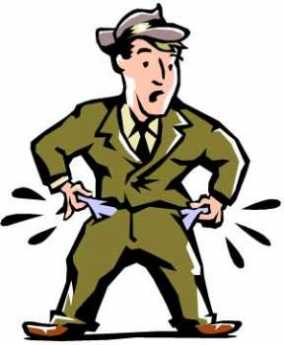
|
| Empty Pockets |
After introductory pleasantries, I told him of my arithmetic problem. My daughter was taking five courses, so the family was paying ten thousand dollars a year, per course. Since most of her courses had over two hundred students in the lecture hall, the University was being paid two million dollars to teach each course. Was it possible I had got the arithmetic wrong? Mr. Goheen neither flushed nor displayed hostility, but his manner did change. Well, of course, the tuition pays for far more than direct teaching costs. It's expensive to maintain a first-class library, the University has a responsibility to help the town of Princeton with its problems, the University is proud of its very extensive scholarship program for needy students, there is research to be sponsored. Yes, said I, you have fallen into the trap I prepared for you. My complaint is that if I had donated money for those worthy causes, it would all be tax-deductible; but by having it extracted from me under the name of tuition, I was denied the tax advantage. As expected, he quickly changed the subject. And to his evident relief, I let him do so without resistance.
Since that time, I have had the opportunity to play the same game with several college presidents; not all of them have been suave about it. The only one who took me by complete surprise was the President of Lehigh University, who not only told me he agreed but added that he had made himself unpopular with his peers by promoting exactly similar ideas. There is a very serious problem, here. Somehow, the higher education industry has got to engage in some statesmanship because it is only a matter of very short time before someone proposes a government solution.

|
| National Institutes of Health |
It is possible to treat this issue as a problem of how to pay for universal college education, which would put it in a category now occupied by health care, and probably reach a political impasse for similar reasons. Or it could be treated as a problem of teasing apart the instructional costs from the research and scholarly costs. The problem to be solved, viewed from this latter direction, assumes that excellent teaching could occur, isolated from the scholarly activities, in the manner now accepted for secondary and elementary teaching. Conversely, research institutes with no teaching responsibilities are widely accepted in Europe, for instance, while in America the National Institutes of Health are their most prominent example of its workability. It can be argued that a scholar engaged in research makes a better teacher; it can also be argued that talent for teaching is not necessarily found in those with a talent for research. While it is true that some researchers are productive even in old age, for the most part, research is like poetry and sports, a young person's game. A creative scientist can usually look forward to acting as an administrator after reaching a certain age; why not instead look forward to a career in teaching? There appears to be no serious problem with this suggestion, except the nontrivial issue of relative prestige linked to ascending income. In summary, the question is whether we can afford to put another Harvard in every town of a specified size, or whether we will be forced to transform most existing colleges into enlarged high schools, as we build more of them. Obviously, that's a cheaper method, the question is whether it is a good enough product. Whatever the model to be mass produced, the overall cost would be reduced by stripping out populations who do not need so much education, and getting Google or IBM, or someone similar, to apply massive amounts of information technology to reducing the cost. In achieving universal health care, by contrast, we can reasonably foresee research reducing most of the delivery costs we now contend with, even eliminating some of the major diseases. In education for a service economy, the potentially increasing educational need is unfortunately endless.
Therefore, no matter what pattern we adopt, it must be organized to be in competitive tension with the manpower needs of the economy, rather than unmeasurable goals like becoming well rounded. If the reason we need a vastly more educated population is to supply better-educated graduates to run the economy, some kind of tension must exist between the two, or the educational establishment will ruin us with purposeless expansion, just as some elements of the healthcare industry might wish to do with their services, and almost all trial lawyers unashamedly wish for in their area of expertise.
In this area of economic design, lies the answer which President Goheen should have made to me in the Cosmos Club. By asking for a massive tax deduction, I was yielding to the idea that education was always a responsibility of government, always paid for by rejiggering the tax code. In that direction lies disaster, since control of the tax code lies in the realm of politics and leads to populist solutions. We must not unbalance power relationships so that economic leaders, asking for a better-educated workforce, are not eventually confronted with crippling taxation for the betterment of bloated academia. A typical college has as many employees as students. We cannot get caught up in an unrestrained process leading to half of the population teaching the other half, except for those who have retired and receive a pension from both activities. Rather, this expensive quest for quality must be seen as the other half of the immigrant's dream, which is no longer that of average performance in an industrial economy, but rather that of excellence in a service economy.
What's Different About Kosher ?

|
| Kosher Foods |
About half of the labeled food products in a typical supermarket are designated Kosher, displaying a "K". That seems remarkable when only about 1 million American Jews are observant or Orthodox, thus eating only Kosher food for religious reasons. So, the Chemical Heritage Foundation recently decided it would be interesting to examine the definition and details of the Kosher designation, which presumably has some chemical basis. The CHF was right about the interest in the topic; attendance at the auditorium was packed. The following is entirely derived from what was discussed there.
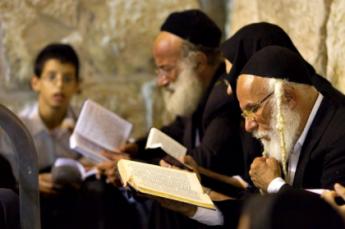
|
| Rabbi |
One might have carelessly supposed that a religious designation of food products would have an exclusively religious basis, probably related to preparing the product according to a religiously defined method or ceremony. That's essentially true, but what is unexpected is that the choice of food to be included or excluded must obey a strict and extensive set of rules. The basis for the rules is found in the Old Testament, but specifics have been evolved by designated Rabbis, rather like the way the interpretation of the U. S. Constitution is left to the U.S. Supreme Court, and has considerably evolved in the process. An examination of these evolved rules is what leads other denominations of Jews to avoid the issue or even to decline to endorse it. That makes it rather awkward for chemists to understand the Kosher process in strictly chemical terms. For a perhaps extreme example, hard cheese but not soft cheese is strictly forbidden within Kosher rules. That's because the rules state that eating meat is fine, eating cheese is fine, but six hours must elapse between eating either one. What's forbidden, then, is a mixture of meat and dairy. Hard cheese is produced by exposing soft cheese to rennin, or rennet. Rennin is produced from the stomach of cows, so the interaction is deemed to be simultaneous rather than separated by more than six hours. It certainly is true that a chemical reaction between two ingredients is difficult to imagine if it is anything but a simultaneous contact between the two. So, chemists would have to agree that hard cheese involves less than a six-hour separation between meat and dairy. But most chemists would regard this interpretation to be somewhat strained; to punish people for disregarding it seems excessive. Whatever disagreement there may be is not based on the facts, but on the importance to be attached to them.
Similarly, most chemists would resist the idea that a chemical product derived from two different sources differs in any way at all. The most important example of this issue is glycerine, a common food additive. A fat consists of three fatty acids attached to glycerin; pure glycerin is produced by separating the fatty acids from it, and in any event, the fatty acids of pigs and cows are also chemically identical, at least in the view of chemists. Glycerin derived from pig fat thus seems to chemists to differ in no meaningful way at all from glycerine derived from cow fat. To those in charge of Kosher rule making, however, the difference in the source is vital, needing to be searched out in minute detail. Since Coca-Cola contains traces of glycerin, and the Coca-Cola manufacturer wished to have a Kosher label, the company somehow had to satisfy the Rabbinical demand that the sources and processing steps of the glycerin be identified in minute detail. Coca-Cola contains a secret ingredient which some believe is essential for the true Coke taste; the company was not going to reveal its processes. Somehow, this quarrel was resolved privately, although it is not easy for outsiders to imagine how it could be.
And so on. There may, of course, exist many Kosher rules which make perfect sense; the speakers did not go into that. What remains of general interest is the question why so many non-Orthodox Jews, in fact so many people who are not Jewish in any sense, insist on eating only food with a Kosher label. At the conference, it was explained that many people who have been told they are lactose-intolerant, or allergic to some protein, become fanatic in their fear of contact with such chemicals. That is, as a matter of fact, a common observation in many doctors' offices. These people seem to have developed the idea that they can trust the Orthodox rabbis to be even more fanatic than they are if anything more rigid and unyielding in their pursuit of particular exclusions. While that has driven many Jews away from Orthodoxy into other religious directions, it has served to reassure the health fanatics. The food manufacturers don't particularly care about the social features; if that "K" sells the product, they want to have it.
On hearing of these issues, one of my Jewish friends suggested an extension to Jewish kitchens. It was his view that if a real estate agent shows you a house with two or more ovens, two or more stoves, or even two or more kitchens, it probably had a Jewish owner at some time in the past. Multiple kitchen arrangements are much less likely to reflect an owner who likes to entertain a lot, than an owner who has been told of the six-hour mandatory wait between eating both meat and dairy, and has persuaded himself this rule extends to the separation of stoves. There's no great harm in any of these beliefs, of course, unless it is somehow represented that they improve the health of the believer, which would drag a highly reluctant Food and Drug Commissioner into a dispute he can't win, no matter how he rules.
Whatever the complete truth of all these suppositions, they lead the casual reader to let his thoughts meander. There's a similarity here to a great many other prohibitions and adherence, tenaciously adhered to, resulting in elections won and lost, provoking scorn heaped on non-believers. And even to totally unrelated legislation getting derailed because legislative representatives were unwise enough to take a stand on this one. Pro or con.
Cushman Club for Lonesome Actresses
 |
| Charolotte Cushman |
Lydia Ellicott Morris was married to another member of the Quaker colonial aristocracy, George Spencer Morris; both of them were active members of many organizations, including the Philadelphia Savings Fund Society, Friends Hospital, and several of the clubs on Camac Street. Their home for many years was located at 225 South Eighth Street. George Morris was a senior partner of Morris and Erskine, Architects. One day, Lydia was riding on a trolley car.
On the trolley, she overheard two young actresses fretting over the problem that traveling actresses were forced to live in hotels and boarding houses along with traveling salesmen. This circumstance forced them to experience much-unwanted attention and made being an actress a difficult occupation for respectable women. Lydia promptly got off the trolley and formed an organization raising funds to create in 1907 a boarding home to provide safe, respectable, inexpensive lodgings for actresses in traveling shows, playing in Philadelphia. It was named after Charlotte Cushman, the first internationally famous American actress, and located at 1010 Spruce Street. Charlotte Cushman had no connection with the club, but her fame can be appreciated from the fact that in 1874 after her final performance, 15,000 people were reported to have serenaded her outside of New York's Fifth Avenue Hotel. The Ninth Regimental Band played, while fireworks illuminated Madison Square. Ms. Cushman died in 1876.
Another major donor to the club was a Mr. Peterson, otherwise unidentified, who gave them $50,000. Further funds were raised at five annual teas. In 1925, Philadelphia was a major center for the film industry, and much Charlotte Cushman Club early history relates to movie associations. Much of the early endowment was unfortunately lost in the 1929 stock market crash, however, and the club continued only a subdued presence for a number of years. By 1999, it was clear that the original purpose was not really needed, and the club was disbanded. Its possessions, including the last of several clubhouses, the collections, and a rather valuable library, were sold off, and most of its other belongings were donated to the Franklin Inn Club. The club began a new existence as the Charlotte Cushman Foundation, first endowing the Charlotte Cushman Board Room and Exhibit, at the University of the Arts, and then in 2001 began making grants to local nonprofit theatre groups. At present, the Foundation dispenses an income of about $45,000 yearly among 43 non-profit theatrical societies which continue in Philadelphia. Present dominant activity is to select the Leading Actress in a Play, as part of the annual Barrymore Awards. The rise of the club reflected the vibrant downtown social life of Philadelphia at a time when almost all Philadelphians were residents of the center city. And its decline parallels the loss of civic-minded center city residents following the spread of household automobiles and the continuing wreckage of traditional civic feeling following the 1929 crash.
The Foundations's website is www.charlottecushmanfoundation.org, and its email address is CharlotteCushmanFoundation@gmail.com
Thieves of Baghdad
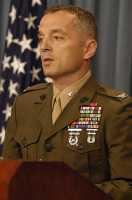
|
| Col. Matthew Bogdanos |
Col. Matthew Bogdanos, of the U.S. Marines, gave an interesting insight into what the Baghdad Museum really was, how it was captured, and how the treasures were recovered, at the University of Pennsylvania Museum the other night. Our own museum is said to be the second largest archeology museum in the world, after the British Museum. After discovering what was really in the Baghdad museum, that ranking may have to be revised; but the chief Philadelphia interest traces back to the discovery of the ancient city of Ur by Philadelphia archeologists during the last century, an event which essentially created the University Museum. This was where civilization began, and we discovered it.
The reserve Colonel happens to be a prosecutor for the New York District Attorney, was trained extensively in classical antiquities; and so was the perfect point man to lead the capture of the Museum during the Iraq war, very well suited to follow the looted treasures into the international antiques market -- and recover substantially all of it. Something like 62,000 pieces were recovered, and all of Nimrud's Treasure, the prize possession of the museum.
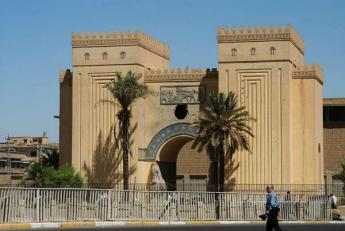
|
| The Baghdad Museum |
There has been criticism of our troops -- some of it right out of this evening's Philadelphia audience -- for allowing the place to be looted in the first place. But that sort of assumes the place was lying vacant and undefended while our troops were out shooting innocent civilians. That's a misapprehension quickly dispelled by videotaped scenes of real live shooting and rockets coming out of the place at the time, which the Colonel was happy to display. Questioners were invited to claim they would have been willing to go into that hornet's nest in order to save alabaster statues, but others in the audience inclined to giving the Marines some benefit of doubt.

|
| Hussein Millions |
That place was vandalized when the troops got into it; to say it was thoroughly vandalized is only true in a sense. There was indeed a lot of looting, but the bigger surprise was to find there were hidden storage rooms behind steel bank doors, filled with the really best antiques, as well as vast boxes of American hundred-dollar bills. By weighing the hundred dollar bills (22 pounds for every million dollars) it was estimated that Saddam Hussein had about $800 million in U.S. currency stored in that one place. Gold as a raw commodity has since gone up considerably in value, but many of the best antique gold pieces on display in the museum were only copies, the originals were kept in the secret vaults. The international market appraises quite a few of these pieces at over $10 million apiece. Apparently, the thieves knew exactly which pieces were valuable, and went straight to them without even pausing to notice other rooms full of objects of lesser value. The museum had been closed to the public for the previous twenty years; it seems rather obvious that Saddam was storing these objects in order to buy weapons for continuing guerilla activities underground, or in exile. The museum itself consisted of nearly twenty separate buildings in the center of Baghdad, and the custodians obviously must have known where things of serious value were kept, in order to get to them so precisely.
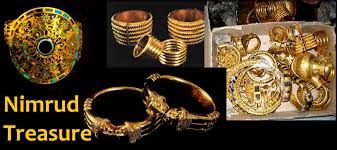
|
| Nimrud's Treasure, |
Offering an amnesty, no questions asked, brought in thousands of recoveries from the local public. Getting other pieces back from art galleries in London, Geneva and Berlin required methods that were not described in detail. Some of us who remember the German and Japanese mementos which were "liberated" during World War II have an immediate appreciation of the improved American troop discipline which must have been imposed in the Iraq War. That's something to think about, too. Our troops had been given extensive training to respect the cultural heritage of the enemy, and they evidently did so to a remarkable degree. One certainly has to doubt that Saddam was locking that material in vaults for twenty years in order to preserve the culture of any sort. If it had any other purpose than to serve as a way of transforming oil wealth into munitions, it's a little hard to imagine what it was.
L. Stokowsi and the Philadelphia Orchestra
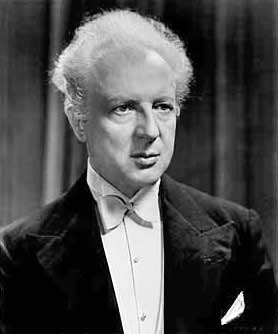
|
| Leopold Stokowski |
Leopold Stokowski remains unchallenged as the greatest musical leader in Philadelphia's history. Serious musicians acknowledge his eminence in musicianship, while it must be admitted he enhanced his reputation with a great deal of showmanship. Showmanship makes Philadelphia grit its teeth.
Stokowski lived to be 95, so it is easy to forget the Philadelphia Orchestra was pretty insignificant when he arrived in 1912. Together with a great deal of money available from the Curtis family, he pretty much had a free hand in upgrading the players, one by one, making radical changes in the ingredients of his unique "Philadelphia Sound" by changing the proportionality of various instruments, modifying the physical variants of each instrument, rearranging the seating arrangements of the players on the stage, and responding to the acoustical properties of the Academy of Music. He composed hundreds of personal recordings of classical pieces and introduced dozens of new modern composers and soloists. He was a musician's musician, and partly because of his very long life he was able to change the nature of American classical music, putting Philadelphia at the very top of the heap.
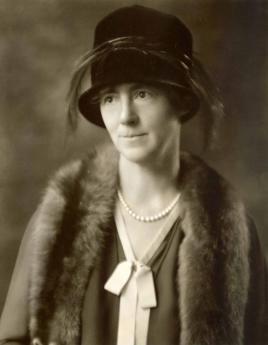
|
| Mary Louise Bok |
He was also very quick to make use of new technology and new instrument variants. It was perhaps a bit of luck that RCA Victor was located just across the river in Camden, so the revenue from recordings was very substantial, right from the early years of this new form of entertainment. He appeared on radio and later on television. His movie Fantasia was the greatest and perhaps an only movie to make a smashing success of classical music. Behind the scenes, he took great care with arranging the instruments for recording sessions. Much of the vaunted acoustics of the Academy of Music was simply peculiarities of it, against which he made the musicians adapt their effort to create a characteristic sound which was partly due to the hall, and partly a conscious response to it. When the Orchestra took its many trips to other cities and nations, great care was taken to adjust the volume of component sounds to the size of the hall, emphasizing various instruments to exploit local peculiarities.

|
| Gloria Vanderbilt |
And finally, the exasperating part. He discarded the baton, directing with his bare hands. He discarded the score and directed from memory. He arranged the lights to shine only on his head and hands. He had temper tantrums with questionable justification. His first wife was named Lucie Hickenlooper but she changed it to Olga Samaroff to seem more exotic and urged Leopold to affect a continental accent and emphasize his middle European ancestry, even though he had been born and educated in England. He had a famous affair with Greta Garbo; it probably did not need to be famous. He married two heiresses with great fanfare and notoriety. They said he was gorgeous. Just how much of all this was due to his innate egotism, and how much was the affectation of an impresario is left to one's imagination. It is not difficult to imagine friction between him and the members of his board of directors.

|
| Greta Garbo |
As time has gone on, the physical acoustics of the Academy of Music has changed. Carpets have been added, seat backs replaced. When a new pipe organ was added, its weight required a second layer of flooring to hold it. Somehow, Stokowski's successors have been unable to change the orchestra to compensate completely for these subtle modifications; perhaps they had a different emphasis. One wonders if the veneration of former successes of many sorts might have held back the leadership of the orchestra from being sufficiently radical. In Stokey's day, radical changes were the expected thing, today they are viewed with caution. And most of all, there has been a role reversal between conductor and players. In the beginning, the players were on trial with the conductor. Today, the players are far superior in quality because of fame and the Curtis Institute; except for personality and showmanship, most of them could qualify as soloists. Consequently, any new conductor is on trial with the players, and the players' glory in it a little. In a profession filled with neurotic insecurities, there isn't room for quite so many egotists. Everybody seems on the edge of asking whether they need the orchestra, or the orchestra needs them; at times of financial downturn, that extends to the board of directors as well, and even to the audience.
The Philadelphia Orchestra is far stronger than it used to be. It trails a century of triumphs, a pantheon of stars, and the remarkable strength of the Curtis Institute continually renewing its talent. But like so many institutions with a glorious history, it must be careful not to rest too confidently on its strengths.
Frank Furness (1):PAFA
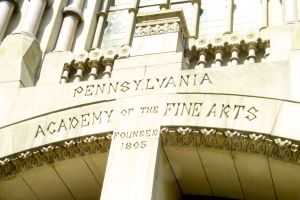
|
| Pennsylvania Academy of the Fine Arts |
The Pennsylvania Academy of Fine Art is notable for its place in Art history, for its faculty over the centuries, and for its influential student graduates. It is therefore not to slight the institution's remarkable place in the world of art if we pause to notice that the building itself, the place that houses all this, is itself an outstanding work of art. Whenever mention is made of Frank Furness, its colorful and influential architect, the first stop on the list is the building he built to house a school and display its glories. Perhaps the best way to illustrate the achievement is to compare it with the Barnes Museum, which also was built to house a school. It also has an outstanding permanent collection, perhaps a greater one than PAFA. But the Barnes building scarcely gets a mention and is about to be abandoned for a preferable location. The Furness building, however, is a massive pile of solid rock, immovable throughout massive changes in its neighborhood. To move that building out to the Parkway has never even been suggested. You can move if you like; we were here first.
The exhibition rooms are interesting, even clever, but the hand and mind of the architect are best seen in the school, the Academy. Seldom seen by the public, the entrance to the school is underneath the front staircase which sweeps the public visitors off to see the exhibition. Up to the stairs, admire the carved walls, the massive supports and the iron railings and out into rooms with scarlet and gold walls, and a blue ceiling with stars. When it leaves, the public sweeps back down the inside stairs and out the tunnel-like entrance, then down the outside stairs. Where was the school?
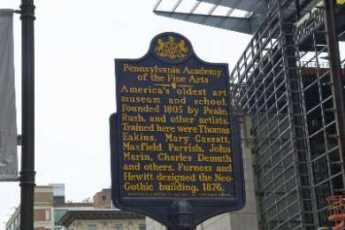
|
| PAFA Marker |
It's underneath the exhibition area, reached by a door under the stairs, unnoticed unless you ask for it. There you will find a darkened lecture hall and corridors lined with plaster casts for teaching purposes. But an artist's studio must have diffused northern light, and lots of it; the problem for the architect was to provide a huge slanted northern skylight over a basement. This trick was accomplished by pushing the walls of the first floor out to the street and installing a slanted skylight in the "ceiling" of the overhang. When the overall effect is that of a fortress meant to defend against a barbarian invader, built with massive walls and roof -- hiding a glass skylight is quite an achievement. Furness was a showman; it was not beyond him to place an architectural tour de force right in front of generations of students looking for something to portray.
We are told the building was five years in construction, designed and re-designed as it rose. The resulting effect is achieved by building around its interior as it evolves from bottom to top. Quite a difference from buildings laid out in advance, forcing the interior contents to conform to the initial design without regard to cramming down its contents. There is an overall design at work here; it's evocative of a Norman church with side extensions, but you have to look for that rather than having the architect thrust it in your face.
Gum
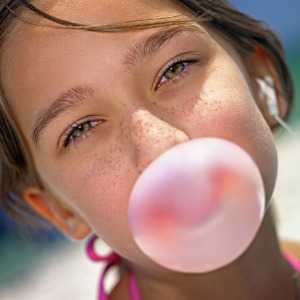
|
| Gum Bubble |
The ancient Greeks and Romans are said to have enjoyed a sort of chewing gum. The ingredients are uncertain but unlikely to have been chicle, the sap of a variant rubber tree, which was taken up by the Mayans in the First century. The vision thus ensures that Mexican soldiers might well have been chomping when they set out to conquer Texas and devastate the Alamo. Conceivably Santa Ana himself was popping bubbles when Sam Houston found him crawling through the tall grass when he should have been dying like a man.
What is not so fanciful is that Santa Ana did go into exile in the United States, seeking refuge on Staten Island. Taking along a large supply of chicle, he was hoping to find a way to change it into rubber and thus restore his fortunes. His New York landlord, a photographer named Adams, struggled unsuccessfully for months to change the gum into rubber, but eventually switched over to chewing gum of chicle. This Mexican rubber variant is chewy only within a narrow temperature range, getting brittle when cold, and sticky when hot. The outcome of this bizarre episode was the Adams brand of chewing gum, a dominant feature of our culture until 1922 when William Wrigley, Jr. of Chicago added a mint flavor and made a great fortune selling the hope that minty taste would clean your teeth, sweeten your breath, and improve attractiveness to the opposite sex. Wrigley must have been a great businessman, since the Wrigley Building still dominates central Chicago, while everyone knows about Wrigley baseball field, and his descendants even run a private railroad through the Copper Canyon south of Tucson into Mexico. Wrigley's winter mansion sits on top of a small mountain outside of Phoenix, once affording a grand view of the surrounding desert for many miles. But subprime mortgages helped build up the desert, so at night there is now a sparkling view of the lights of Phoenix suburbs, longingly gazing up at Wrigley's mountain fastness filled with pictures of relatives who got themselves great notoriety, mostly related to unfortunate escapades with love.
Well, whatever. By 1960 a cheaper synthetic chemical came to replace chicle in Chiclets without distressing the customers and seemingly making it commercially practical to spread this central feature of American culture to Asia, Europe and beyond, with the notable exception of France which makes their cultural superiority a point of national pride. On further reflection, if they prefer vintage chicle to the present chemically improved synthetic, the French may have an important insight. Just look at our filthy sidewalks.
Other cities may be more diligent in scrubbing their sidewalks, but at least in Philadelphia, the new synthetic chewing gum is leaving its mark. The realization gradually creeps up on you that sidewalks near popular corners of the center city are spotted with round black spots, slightly larger than a silver dollar, but uniformly black. Just what the sidewalks around high schools look like, I tremble to consider. But those city corners where a sidewalk vendor parks his cart are particularly peppered, representing the disgusting habit of spitting the chew-gum on the sidewalk before eating the hot dog. The detritus is flattened out by someone's shoe, and the result is quite distinctive. As I was contemplating a particularly loathsome street corner, a passing Philadelphia Grand Dame shared her insight with me that the gum attracts dirt and gets black. I somehow doubt that because it is such a uniform blackness. It seems more likely that the trade secret chemical deteriorates in the sunlight, and being less sticky than the traditional goo, sticks to the sidewalk instead of the shoe which squashes it.
So think this over. Someone was recently chewing that stuff; would you kiss that person? If it's fresh enough, it might transmit the flu virus to your shoe; ye Gods, maybe the HIV virus, perish the thought. There's a great absence of evidence about the disease transmissibility of this unknown material. Maybe our congressmen should take a recess from blaming Wall Street for the decline of Greece and Portugal. And make chew-gum scoopers just as mandatory as pooper scoopers.
Footnote: A fellow member of the Right Angle Club recently revealed he had once worked for the Philadelphia Chewing Gum Company in Havertown, which was closed by new owners in 2003. While he didn't know anything about the ingredients of gum, he could report that this company used trainloads of old rubber tires for some purpose. On further checking, it is stated in the literature that at the present time, no chewing gum doesn't use rubber, so apparently Santa Ana's dream has finally come true in a round-about way.
America's New Theater Capital
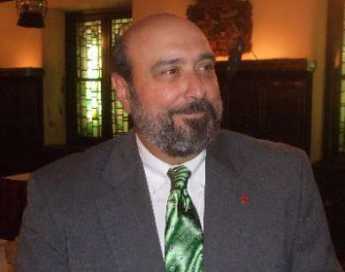
|
| Gene Terruso |
In the Elizabethan era, London experienced a remarkable burst of legitimate theater; Shakespeare was only one part of it. There were fifty-five theaters in London at a time when only two were open in Paris; no one is certain why that happened. Similarly, no one is sure why Philadelphia has decided to have a flourishing theater scene, but if you look around it is true. After 1929, Philadelphia became a "try-out town" for plays hoping to go to New York; we were in a class with New Haven CN and Washington DC. Home-grown talent languishes in competition for audiences who would rather see famous visiting stars. The try-out image is harmful and must disappear before local talent can develop. Once established, however, audiences rather like a theater company with a deep bench; fresh young aspirants at every level, as contrasted with one famous star surrounded by hacks in the lesser roles. The same reaction is seen in minor-league baseball. And no doubt union seniority systems are partly designed to protect the hacks from competing young aspirants. A certain amount of amateurism is forgiven for inexpensive amateurs; when they get expensive it's better to watch movies. The Right Angle Club was pleased to have it all described if not explained by Gene Terruso, the Professor of Drama at the University of the Arts on Broad Street where the old Ritz-Carlton used to be.

|
| The Merriam Theater |
As far as inside gossip is concerned, the Merriam Theater is owned by the University of the Arts but is sort of doomed to shabby prosperity for the next 13 years by a lease which is too lucrative to modify. That's why the seats are a little uncomfortable, the lobby dilapidated, and comparatively few student productions are on the stage. The University would like to have more student presentations but isn't in a financial position to displace the tenants generating such high revenue. The best that can be made of the present arrangement is to encourage the visiting professionals to mingle with the drama students, bedazzling and advising them how to advance in the Big Time. It's been a fairly successful compromise.
Until recently, Chicago seemed to have the most successful regional theater experience, but now is thought to be on a par with Los Angeles, Seattle, and Cincinnati whereas Philadelphia has supplanted it as the very best place to be. Going backstage, the kids express little interest in going to Broadway, where overpriced theater seems to them to be just part of the tourist industry. Television is regarded as old-fashioned, so Hollywood is unattractive to them, too. If that's all the future holds, these kids would rather become accountants and computer engineers. And stay right here if they can; that seems to be a central motif. Gene Terruso says there is an "Iceland phenomenon" in Philadelphia, a wonderful hidden place to live, so tell everybody else it is cold and dreary and they will stay away and not ruin it.
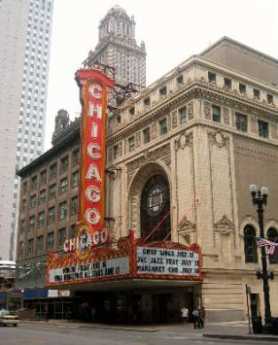
|
| The Chicago Theater |
The fact seems to be that Chicago is seen to have a great many "hole-in-the-wall" theaters, while Philadelphia has well over thirty flourishing theater troupes. The professor in him prompts Gene Terruso to postulate that the secret of our success is for each repertory troupe to specialize in something, get good at it, and bank on the motto Be clear about your mission; the audiences will follow. Therefore, we have Shakespeare companies, musicals companies, Restoration comedy companies, and so on. Some specialties are obviously more popular than others. Somewhere in this business school analysis is the likelihood that artsy craftsy people are seldom very good at running a business, so theater success does depend on non-actors who are business-oriented minding the store, and possibly not much good at acting. It's a lesson many idealists and liberals need to learn, and not just in the theater.
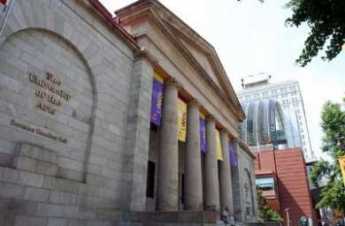
|
| University of the Arts |
Professor Terruso does ruefully admit that the University of the Arts is a conservatory, by which he means a trade school. Its graduates are more likely to know how Hamlet should run a sword through Polonius without killing the other actor than to discuss the place of Shakespeare in our cultural heritage. To have a successful theater, however, there has to be an enthusiastic audience. Somewhere, our universities have found it easier to provide a liberal education to one group of people and impart the tricks of the trade as a specialty of someone else. If the two talents merge at all, it is in the profession of Dramaturge, but all in all, it would be better if both sides of the footlights understood each other somewhat better. Going to the theater really isn't a specialty, and it isn't a secret society, either. That's part of the response to city leaders who greatly desire a thriving theater, but wish we didn't have to see so many of those artist types walking around town. Both groups need to understand "There's plenty of room at the top, but no room at all at the bottom."
Mennonites: The Pennsylvania Swiss
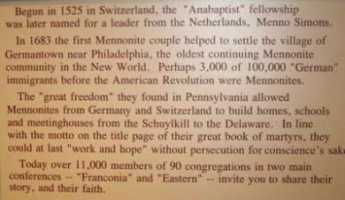
|
| On the Wall of the Mennonite Heritage Center |
Anabaptism, originally attributed to Ulrich Zwingli around 1525, centers around believing a baby is too young to understand baptism, so adults need to be re-baptized. The idea arose independently in Switzerland and Holland, and probably thousands of believers were unmercifully martyred for holding the belief. Because the worst persecutions took place during the War of Austrian Succession (1740-50), they are often attributed to the Roman Catholic Inquisition, but Magisterial Protestants, believing in the separation of church and state, were often also responsible. Many seemingly unrelated issues were introduced locally, and this period of unrest is known as the French and Indian War in America; its major battle took place in Louisburg, Nova Scotia, although George Washington's skirmish around Fort Duquesne (Pittsburgh) has acquired local fame as a major American manifestation.
The Swiss adherents moved to the Rhineland Palatinate, and from there were among the first to accept William Penn's offer of religious freedom. They were the settlers of Germantown, but have mainly moved a few miles west to southern Montgomery County, where the confusion about Pennsylvania Dutchmen is further confounded by the fact that they were Swiss. Menno the Dutchman gave his name to the order, but they themselves regard their true ethnic background as Swiss from the Zurich region. That, by the way, is not to be confused with Calvinism, which also comes from Switzerland, but by way of Geneva, not Zurich. The pacifism of the Mennonites made them mutually attractive with the English Quakers, who had made an appearance fifty or so years later in the region around Manchester, England; each group seems to have adopted some of the features of the other.
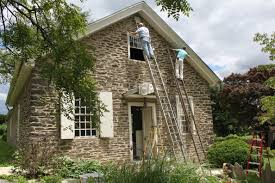
|
| Franconia Mennonite Meetinghouse |
Determined use of the German language has always held the Mennonites apart, however. From the start, it was really necessary to be somewhat bilingual in Montgomery County, using English for business conversation, and German at home and in the church. The idea of using a foreign language is based on the hope it would thus maintain a sense of distinctiveness or even remoteness from non-believers, without adopting the least hostility to them. It almost inevitably follows that the group has used its own schools, attached to their meeting houses. This sense of remoteness has persisted for almost four hundred years, surrounded by entirely different cultures. Starting only around 1960, this attitude has gradually softened, however, and it is widely assumed that in another few decades Mennonites will come to resemble the people in their environment a great deal more than they do at present. If you want to know where to find them, Harleysville is a good place to start. As the tinge of Pennsylvania Dutch accent gradually fades, and fewer of them wear the old costumes, a curious remaining hallmark of their presence can be noticed: an avoidance of foundation planting around their houses. The Mennonites themselves seem to be entirely oblivious to this unintended distinctiveness, which is however quite striking to non-Mennonite passers-by. Those who work in the fields all day have little interest in digging around their houses for decoration; those who have moved away from farming have seemingly adopted the bush-less style as a natural way of arranging things. There's no particular reason to change it, and so, there's no particular reason to notice it.
History of the Mennonites
Christmas Reflections (Podcast)
Perpetuities
Although some churches and mummies are well preserved after thousands of years, and no doubt a few corporations do last century, the fact is most of them don't last very long. Most new corporations go bankrupt within ten years, and only one (General Electric) of the original thirty members of the Dow-Jones Industrial Average existed in 1900. Members of the Dow may seem the biggest and best, but in fact, live on a slippery slope. Not-for-profits, like churches, may do somewhat better, although the handful who approach perpetual status may be rare exceptions. One big reason not to leave a major bequest to any of them may well be that most will not survive. While we are on this subject, the same reasoning applies to the stock in for-profit corporations. Since few of them thrive for more than seventy-five years, the idea of buying their stock, holding it forgotten in a safety-deposit box, and passing it on intact to heirs, is probably doomed to investment failure. The oldest stockholder company in America is called the Proprietors of West Jersey, founded in 1676 but still meeting once or twice a year. It would be moderately interesting to know how well this investment performed over the years, but Google sounds like a better bet offhand. Just don't hold it too long.
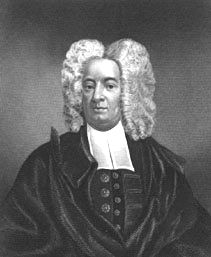
|
| Cotton Mather |
There may be a connection between success as a non-profit and success in the merciless marketplace. Those who have compiled statistics will tell you that steadily withdrawing more than 4% a year from an endowment portfolio, sooner or later leads to a day when there is nothing left. Most trustees expect better results than that, and most managers of non-profits will need more than that, no matter how big the pile was when they started. Sooner or later, markets will decline, mistakes will be made, and the endowment will be exhausted by "emergency" withdrawals which relentlessly withdraw more than 4%. This pitiful decline might be avoided by gathering the managers of influential non-profits together, giving them a stern lecture, and somehow forcing them to live within their means, but offhand nothing sounds more futile. Jonathan Edwards and Cotton Mather were said to be good at haranguing. But since it must be obvious that non-profits usually survive by constantly soliciting fresh endowment funds, what would be the matter with taking a direct approach to that goal. Why not just state in advance that the institution is only intended to do its good work for say fifty years, and then it must turn its residuals over to somebody else? Not many endowments have been limited to a lifetime of fifty years, but in those who have done so, the experience seems to be that most of them immediately set about to raise additional funds to keep the institution from disappearing. The American Enterprise Institute in Washington, for example, started out dispensing about a million dollars a year; last year it dispensed over $30 million. Whether he intended it or not, the message Mr. Olin transmitted was not that think tanks are only good for thirty years. He told his executors in effect, "You have some seed capital with which to start a think tank. Whether it lasts longer than fifty years, is now up to you."
Morris Upended by a Nobody
THE Revolutionary War ended militarily with the Battle of Yorktown in 1781, and diplomatically with the Treaty of Paris in 1783. The careers of Washington and Franklin appeared to be complete, while the economic and financial career of Robert Morris seemed likely to stretch for decades into the future. But as matters actually turned out for these three fast friends, it was Washington who was propelled into a new political career, Franklin soon died, and Morris got himself into a career-ending mess. The financial complexity and economic power of the United States did grow massively in the next several decades, but unfortunately, Robert Morris was soon unable to exert any leadership. At the end of Washington's eight years as President, the power of the Federalists, and particularly the three men most central to it, was coming to a close. John Adams had a tempestuous single term, and then Federalism was all over.

|
| Robert Morris |
The end of the Eighteenth century marked the end of The Enlightenment and the beginning of the Industrial Revolution, accompanied by many national revolutions, not just the American one. This was a major turning point for world history. The momentum of these upheavals still continues, but it is clear that the Industrial Revolution of which the Morris banking revolution was an essential part swept the world far faster than the social and political revolution, in which he also played a pivotal role. In the banking and industrial revolution, it is universally agreed that Morris was almost always right. In the social and political world, it is conversely agreed he was quite wrong. Essentially, Morris assumed that a small minority, an aristocracy of some sort, would rule any country. Within weeks of the ratification of the new Constitution, or even somewhat in anticipation of it, America made it clear that replacing an aristocracy of inheritance with an aristocracy of merit would not satisfy the need. Morris, born illegitimate and soon an orphan, was obviously in favor of promotion based on merit. John Adams defined leadership even more narrowly; he said a gentleman was a man who went to college, and he probably meant Harvard. Nobody extended the leadership class to include Indians and slaves, but the backwoodsmen of Appalachia made it clear that power and leadership at least included them. Thomas Jefferson was the visible leader of this expansion of the franchise, but changed his mind several times. James Madison switched sides; Thomas Paine switched in the opposite direction. The leaders of Shay's Rebellion and the Whiskey Rebellion lacked coherence and consistency on this point; instead of agitating for a refined goal, they mostly seemed to be running around looking for a leader. William Findlay, on the other hand, knew what he wanted. The issue might be defined as follows: it was obvious that hereditary aristocracy was too small and too inflexible to suffice, but it was also obvious that every man a king was too inclusive. An expanded leadership class was needed, but its boundaries were indistinct and contentious. But to return to Findlay, who at least had a clear idea of what he wanted.
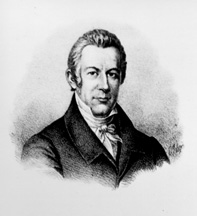
|
| William Findlay |
William Findlay was a member representing Western Pennsylvania in the State Legislature, in 1785. It would be difficult to claim any notable accomplishment in his life; he was largely uneducated. The new leadership class must, therefore, include both the uneducated and the mediocre. The Legislature at that time met in the State House, Independence Hall, in Philadelphia, where no doubt the unconventional dress and manners of backwoodsmen did not pass without audible comment. Findlay made his own political goals quite explicit; he was for paper money to facilitate land speculation which could make him rich. Wealth was a goal, but it did not confer distinction. The rights of the Indians, the rights of the descendants of William Penn, the rights of the educated class and the preservation of property were all just obstacles in the way of an ambitious man who had carefully studied the rules. Everybody's vote was as good as everybody else's, and if you shrewdly controlled a majority of them, you could do as you please. If this meat-ax approach had any rational justification, it lay in the essential selfishness of every single member of the Legislature, working as hard as he could to further his own interest. If someone controlled a majority of such votes, then the majority of the public were declaring in favor of the outcome. Those who believed in good government and the public interest were saps; the refinements of education mostly just created hypocritical liars. There was a strain of Calvinism in all this and a very large dose of Adam Smith's hidden hand of the marketplace. If you were rich, it was proof that God loved you, if you were poor, God must not think much of you, or He wouldn't have made you poor. Findlay had the votes and meant to become rich; if his opponents didn't have the votes, they could expect soon to be poor. In this particular case, the vote coming up was a motion to renew the charter of the Bank of North America. Findlay wanted it to die.
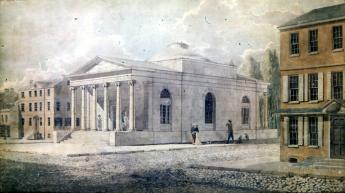
|
| America's first bank, the Bank of Pennsylvania |
It came down to a personal debate between Findlay, and Robert Morris. Morris had conceived and created America's first bank, the Bank of Pennsylvania. Today it would be called a bond fund, with Morris and a few of his friends put up their own money to act as leverage for loans to run the Revolutionary War. After a short time, it occurred to Morris that the money in a bank could be expanded by accepting interest-bearing public deposits and making small loans at a higher interest rate, which is the way most banks operate today. Accordingly, a new bank called the Bank of North America was chartered to serve this function, which greatly assisted in winning the Revolutionary War. There was no banking act or general law of corporations; each corporation had its individual charter, specifying what it could do and how it would be supervised. When the charter came up for renewal, Findlay saw his chance to kill it. Morris, of course, defended it, pointing out the great value to the nation of promoting commerce and maintaining a stable currency. The reply was immediate. Morris had his own money invested in the bank and only wanted to profit from it at the public expense. His protests about the good of commerce and the public interest in stable money were simply cloaking for this rich man's greed to make more money. Findlay made no secret of his interest in reverting to state-authorized paper money, which could then be used by the well-connected to buy vast lands in Ohio for speculation. There were enough other legislators present who could see welcome advantages, and by a small majority the charter was defeated.
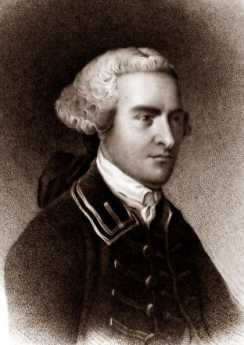
|
| John Hancock |
At this point, Morris made a staggering mistake. After all, he was a simple man of no great background, largely uneducated but fortified by his ascent in society from waterfront apprentice to the highest of social positions, a friend of George Washington and Benjamin Franklin, acclaimed as a financial genius, the man who saved the Revolution, very likely the richest man in America. For many years, he had harbored not the slightest doubt of his personal genius, his absolute honesty, and total dedication to the welfare of his country. To have this reputation and accomplishment sneered at by a worthless backwoodsman, a man who would stoop to using the votes of other backwoodsmen to accomplish self-enrichment, was intolerable. Morris announced and actually did sell out his entire business interest as a merchant, at a moment when he fully understood the new nation was about to enjoy an unprecedented post-war boom. So much for his self-interest. It helps to understand that John Hancock and Henry Laurens had done the same thing in Boston and Charleston, against what we now see as a strange aristocratic tradition of prejudice against bankers and businessmen. In even the few shreds of aristocracy now surviving in Britain and Europe, the tradition persists that a true aristocrat is so independently wealthy that no self-interested temptations can attract him away from purest attention to the public good. The original source of this wealth was the King, who conferred high favor on those who served the nation well. A curious exception was made for wealth in the form of land, the only dependable store of tangible wealth, and transactions in land. Wealth was something which came from God and the King in return for public service. Land ownership was its tangible storage and transfer medium. Otherwise, grubbing around with trade and manufacture was beneath the dignity of a true gentleman.
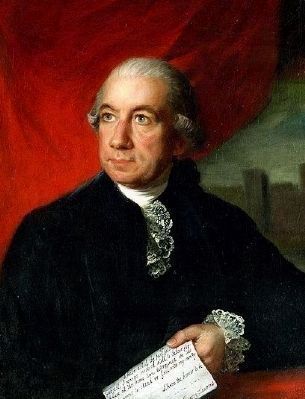
|
| Henry Laurens |
We now know what was coming. Wealth was soon to be the reward of skill and merit, recognized by fellow citizens in the marketplace, by consensus. Findlay and his friends wholly accepted this conclusion, unfortunately skipping the merit part of it for several decades. In their view, you were entitled to the money if you had the votes. As the nation gradually recognized that rewards must be durable, and once granted were yours to have and to hold, the new nation gradually came to see the need for durable ownership of property. Unless or until the owner places it out at risk in the marketplace, legislative votes may not affect its ownership. Our system ever since has rested on the three pillars of meritorious effort, assessment of value by the free market, and respect for pre-existing property. That's quite a change from the Divine Right of Kings, and therefore quite enough material to keep two political parties agitated for a couple of centuries. And quite enough change to bewilder even so brilliant a victim as Robert Morris.
Children Playing With Matches
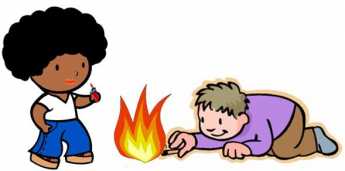
|
| Playing with Matches |
THERE are still a lot of people secretly re-fighting the Vietnam War, which in retrospect was rebellion against the draft and allegiance to the idea that America just doesn't start wars. But times change, and those who now suppose the secret sympathizers with the anti-draft movement will automatically join a second call to rebellious duty, are probably going to be disappointed with how conservative the baby boomers have become. The boomers find themselves parents, defending their own authority from attack by their children. As King Lear ruefully observed in the same reversed situation, let them feel how sharper than a serpent's tooth it is, to have a thankless child. We now define our present world problem as overleveraging, not compulsory military service, and estimate it may take as long as fifteen years to sort itself out -- until yet another judgmental generation comes over the hill behind the rebels. The aggregate debts of the European Union, using present-value calculations, are said to be three times as large as the Gross Domestic Product of Germany; now, that's really a problem. When you consider the only sure cure for excessive leverage is "growth", and that the code word of growth really means stuff wearing out, getting used up, and getting obsolete, it is not hard to see it taking 15 years to go away -- much more lasting than any draft dodger issue. When I go to restaurants they are crowded and expensive; people are living on their reserves, but there seem to be lots of reserves so this problem will last a long time.
But, four generations back, I can remember 1937 when there were no reserves, and plenty of homeless people actually froze to death. Plenty of people were then talking Communist who nowadays are talking McCarthyism, hoping no one notices the switch. I used to ride up and down the elevator of a hospital with Harry Gold, the thermonuclear spy no less. So what worries me about the present uproar is that it comes too soon, before very many people get really scared enough to do really stupid things, then recognize their folly.
I think it was Abbie Hoffman, not Jerry Rubin, who climbed up into the visitors' gallery of the New York Stock Exchange and threw handsful of dollar bills, salted with just a few hundred-dollar bills to bring trading to a halt. Big joke; just see who was scrambling on the floor. That's what the sixties seemed like to most of us; a big joke. But out at Kent State, some kids with crew cuts were information, under orders that at the last moment the gun barrels must come level -- and the live rounds slide home.
Statement of Accounts, March 1785
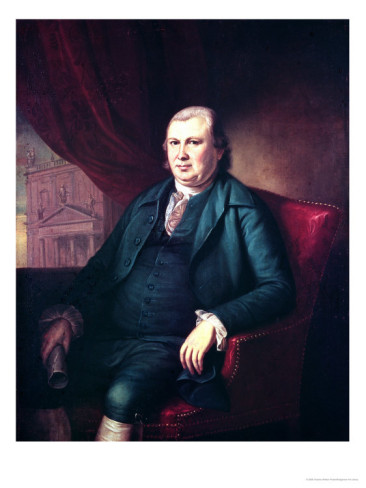
|
| Robert Morris |
AFTER resigning his position as Financier of the United States, Robert Morris worked for five months laboriously summarizing and detailing his official activities, and then he paid for printing five hundred copies of it. The document had a five thousand word preamble and over two hundred printed pages of detailed accounts, a prodigious effort. And a rather unprecedented one in an environment of traditional national secrecy about its accounts, except for the pioneering efforts of Necker in France. His reward at first was an infuriating discovery five years later that the government had not released his report to the public, and continued throughout this time to investigate Morris's earlier activities on the Secret Committee. The standard of bookkeeping for a secret committee engaged in smuggling arms before the Declaration of Independence was understandably obscure, and to have it flogged for failing to uphold the improved standards of government accounting which Morris later devised for the new nation was such a mixture of ingratitude and slyness that the behavior seemed well beyond infuriating. Nevertheless, it must have been gratifying to end the report with a positive balance of $21,000 even after eight years of struggle, war, and improvisation. The magnitude of this achievement was not lost on others in a position to see the contrast with earlier efforts, encapsulated by James Madison whose committee report concluded, "It appears to the committee that the regular official examination has already been made, and it would be inexpedient to incur the expense of a re-examination."
Madison by this time was evolving into a political opponent of Morris, but Samuel Osgood was a declared opponent of his approach to government accounts. Osgood's assessment of his opposition to the approach was prefaced with a ringing statement of its effectiveness: "I will tell you very freely, that in mere money transactions, he has saved the United States a very large sum... I am also of the opinion that much more regularity has been introduced into the keeping of accounts than ever before existed. This is a matter in my mind of very great importance. And without the strictest attention to it, the several states ought not to trust Congress with a single farthing of their money."

|
| Samuel Osgood |
The supreme irony of this situation was that by imposing strict accounting standards where none had previously existed, Morris was offering to his enemies a club to beat him with. Instead of recognizing that Morris was both too diligent and too rich to bother with cheating, there emerged a duel in which his enemies took unusual behavior to be a sure sign of wickedness, while Morris absolutely courted personal disaster, supremely confident he was unchallengeable.
There are two enduring truths to both positions. It is absolutely true that a well-informed public has a perfect right to do anything it pleases, regardless of the existing rules of government, regardless of the opinions of predecessors, heedless of the opinions of anyone else, past present or future. If a republic has supplanted a monarchy, the republic in a sense has the same divine rights. It's just unwise to act that way in anything but extreme circumstances.
On the other hand, it is also absolutely true that stability, peace, and prosperity are most likely enhanced by avoiding the mistakes of the past, following the accepted rules of conduct, and avoiding the counsel of loud and unstable leaders. Once in a while, a genius does appear and his discoveries should be adapted for future use as rules. Once in a while, a treasured maxim needs to be discarded. In a limited way, these evolutions of the rules of the road are an application of Galileo's invention of the scientific method, applied to the Common Law by Sir Francis Bacon. Make a likely conjecture, then verify it. And the second source of societal wisdom is the constant pressure of Society's Hidden Hand, as described by Adam Smith. The American Revolution was not so much an overthrow of a boisterous king, as it was incompletely successful incorporation of existing principles into a Constitutional system of government.
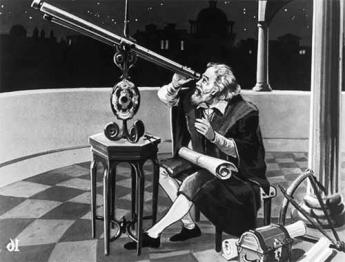
|
| Galileo's invention |
Considering the convulsive upheaval caused by its principles, the 18th Century colonists must be forgiven for misjudging their situation when confronted with a genius like Robert Morris. In barely a moment of time, Morris assembled these ideas into a vastly improved system of government management, immediately proved that it made the country rich, and demonstrated that he had the common sense to make himself rich using the same ideas. Even the idea usually attributed to his friend George Washington, that honesty is the best policy, sounds more like Morris than Washington, and certainly more like Morris than Alexander Hamilton. Only the likes of John Adams protested that honesty came from God. Morris did not deny that was possible, but acted as though it was irrelevant.
Pay attention to the voice of consensus, be quick and alert to occasional innovation, and don't waste your time being crooked. With these three rules, Morris got rich and made his country rich, enraging those who do not think riches should be a universal goal. Don't want to be a millionaire? Plenty of other people will take your place.
Our two-party system began in Appalachia, and one poor soul found himself marooned there. Hugh Henry Brackenridge, a representative of Western Pennsylvania, cried out, "If they would let Mr. Morris alone, he would make Pennsylvania a great people. But they will not suffer him to do it!" Brackenridge was never elected again.
REFERENCES
| Robert Morris: Financier of the American Revolution: Robert Morris: Charles Rappleye: ISBN-10: 1416570926 | Amazon |
One Big Brewerytown
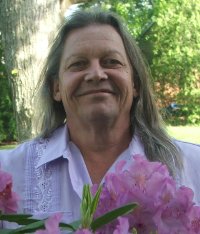
|
| Rich Wagner |
RICH Wagner, the author of Philadelphia Beer, recently visited the Right Angle Club. It's hard to imagine that Philadelphia was once the American center of beer production, with hundreds of breweries and their associated bottlers, beer gardens, brewing equipment, and horse-drawn beer delivery systems, dominating the city scene. Equally hard to imagine that the last Philadelphia brewery closed in 1987, and the biggest American brewer, Budweiser, was sold to the Belgians in the past year. What's this all about?
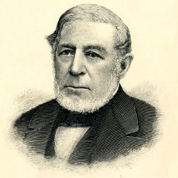
|
| Francis Perot |
In the early wilderness days, water supplies were tainted and unsafe, so most prosperous Quakers had their own little brewery just to avoid typhoid fever. The first American brewery was started by Anthony Morris (the second Philadelphia Mayor) in 1687, in a little brewery on Dock Creek, which became the early Brewerytown of the city, with several dozen brewpubs for sailors and the like. In 1797 there were over a hundred breweries in Philadelphia, and in 1840 there were over three hundred of them. Perot's brewery was prominent for a long time since an early Perot married a daughter of Anthony Morris. Since Philadelphia developed the first and famous city water supply in 1800, beer drinking lost its position as a safe beverage in an unsafe city, and gradually water-drinking became the dominant beverage for the strict and upright. At one time in the early Eighteenth century, gin was cheaper than beer, so even the intemperate multitudes deserted beer for a while, although the effect of the higher alcohol content of gin was apparently fairly dramatic.

|
| John Wagner Marker |
In 1840 John Wagner imported the yeast for lager beer from Bavaria, at considerable personal risk if he had been caught at it. Prior to 1840, Philadelphia beer was either stout or Porter, a very dark and bitter dose, or else ale, which had the advantage of storing fairly well and thus was popular for sailing vessels and among sailors. The yeast for ale floats to the top and ferments, whereas lager yeast sinks to the bottom of the barrel and requires some refrigeration to slow it down. In all forms of beer, the suds are created by later adding some unfermented beer to the barrel for the purpose of generating carbon dioxide. That's what is going on when you see the bartender in a British pub pulling on a lever to pump it up from the basement. Lager tastes much less beery than other beer and is by far the dominant form of beer in consumption -- a considerable improvement, in the view of most people. But it has to be cooled, and Philadelphia had a system. Brewerytown moved to Kensington, dominating the local scene. It was produced in barrels which were trucked to the east bank of the Schuylkill where ice formed on the surface of the river, stilled by impoundment above the Fairmount Dam. Caves were dug in the banks of the Schuylkill where the barrels full of fermenting beer were hauled to be cooled by the ice for the rest of the process. From there, it was trucked again to bottlers in a general ratio of one brewer for thirty bottlers. More directly, it was trucked to the beer gardens of Spring Garden to Girard Avenue, which gave that area a different sort of reputation as a brewery town. By this time, most of the breweries had moved to the region between 30th and 33rd Streets, near Girard, and most of them still survive, made into condominiums by rehabilitation money. One by one, many sections of downtown Philadelphia acquired a beer environment. A dramatic moment in this process was the advent of the 1876 exposition, which caused many of the Schuylkill fermenting vaults to be acquired by eminent domain. A second momentous change was introduced by the invention of refrigeration, apparently invented in Germany near Berlin, but imported and refined by York and Carrier. Philadelphia was particularly suitable for the importation of coal to fuel the heating of the brew, and the chilling of the fermentation. All of this required large numbers of brewers, bottlers, makers of bottles and inventors of brewing equipment. It took many horses to haul all this material around town, and many teamsters to drive the horses. This was a beer town, until Prohibition.
During the long period of beer ascendency, the advantages of big breweries over small ones were gradually making this a major industry, rather than a local craft. Prohibition completed the destruction of the small craft brewers and brew-pubs. Only 17 of the major brewers survived Prohibition, and then even the big ones went out of business, ending with Schmidt's in 1987, almost exactly three hundred years after the first little one started by that famously convivial Anthony Morris on Dock Street. Evidently, the same competitive disadvantages continue as even Budweiser moves to Brussels, where you would ordinarily expect the wine to be the popular drink. Changing tastes have been cited as the reason for this shift, but differential taxes seem more probable as an explanation. In most industries, you are apt to find that most of the competition takes place in Washington and Harrisburg, rather than the saloons of Main Street or the salons of Madison Avenue. But perhaps not. We hear that little Belgium is about to have a civil war because the Flemish can't get along with the Walloons. And somebody in Portland, Oregon got the idea that beer was trendy, and started up the growing phenomenon of craft brewers, usually flourishing in brewpubs. We are apparently going back where we started in 1687.
REFERENCES
| Philadelphia Beer: A Heady History of Brewing in the Cradle of Liberty: Rich A. Wagner: ISBN: 978-1609494544 | Amazon |
Musical Theatre at the 11th Hour
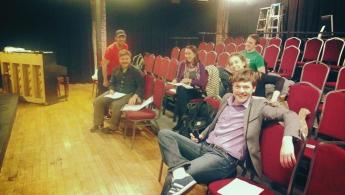
|
| Michael O'Brien |
Philadelphia is having a theatrical revival, very likely leading the cities of America in that regard. One of the central movers and shakers of that movement visited the Right Angle Club recently. Touting his own company, without a doubt, but nevertheless illuminating a movement which seems pretty central to Philadelphia's future. Michael O'Brien is the Producer and Artistic Director of the 11th Hour Theatre Company, which had its origin eight years ago in the Studio of the Walnut Street Theatre, and has since spread out to many venues within Philadelphia. Since Mike O'Brien got his start in theater at the Walnut, it is only fair to say the Walnut Street Theatre was a parent of the 11th Hour. The 11th Hour is a 501(c) (3) nonprofit corporation, so it sort of sounds as though the William Penn Foundation was somewhere in the background, at least at one time.
The 11th Hour Theatre Company is one of 1200 theater companies now active in Philadelphia but is the only company dedicated exclusively to musicals. More finely tuned than that, it specializes in small productions with five or six members of the orchestra, and about the same number of actor/singers on stage. It happens there aren't very many such productions to chose among, so someone must stimulate more composers to pay attention, or the 11th Hour could run out of musicals to produce. Some of this is economic. The kind of big-time musical comedy which makes a gazillion dollars with a huge cast, huge orchestra, huge scenery is very expensive to produce, and probably soon runs out of audience members who are willing to pay huge ticket prices for anything except a huge production success, produced at huge financial risk. For the most part, the national market will only profitably support one or two of those a year, with the consequence that lots of people lose a lot of money on the ones which fail, and most of the successes are rescued by movie and television revenue, which involve further financial risk-taking. Apparently, the successful composers either try to claw their way to the big brass ring or else look for other lines of work. Someone may eventually figure out a way to start with a small musical and then scale it up to the big-time, but what has happened seems to be that actors and musicians who shrug off the big time, cluster together and try to produce a career which prefers a normal sort of home life, to the neurotic struggling which seems inherent in those who consider themselves big-time theatrical material. Somehow, the dictionary definition of the 11th Hour -- the time when most creativity appears -- has instant appeal to the sort of person who prefers to live a normal life within a close circle of like-minded friends and finds that to be a possibility in Philadelphia. We'd like to remind him you can't fill the seats of a theater without an enthusiastic audience, but it's nice to hear our town is a congenial place to live and be an actor.
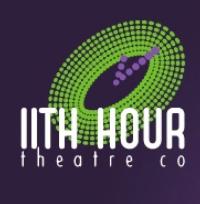
|
| 11th Hour Theater |
Michael O'Brien regards the theatrical revival of Philadelphia to be part of the restaurant revival of the 1980s. Just as the nightlife of Philadelphia was once centered around coming to town to go to the movies, Mr. O'Brien regards the theater as the centerpiece of an evening in town for a couple who want to come for exotic food, plus some entertainment. We have night clubs and celebrity concerts for the dating set, but a quiet dinner followed by the theater appeals to a different, somewhat older set. Once this movement gets started, performers arrive from out of town and discover they like the sort of life entertainers enjoy here, so they stay. And many graduates of local colleges and universities grow up close enough to the scene that they decide they never want to leave. Naturally, a producer and artistic director has the perspective of the performing community and tends to emphasize the attractiveness of Philadelphia to performers. In addition to that, of course, enough dumb old plain citizens have to be attracted to the theatrical product, in order to provide audiences for 1200 theatrical companies; and novelty alone is not enough to sustain that. Some such mutual need was once provided by the sudden Elizabethan flowering of the theater of London, and five hundred years later no one has completely explained it. But for comparison, in Shakspere's day, there were fifty-nine London theaters at the height of the Elizabethan boom, but only two in Paris.
Adoption
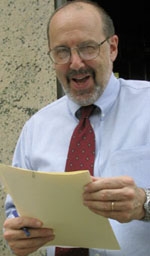
|
| Peter Conn |
Peter Conn, a member of the Franklin Inn of Philadelphia, is recently retired from the University of Pennsylvania. Since he has adoption in his family, he became curious about the matter, found that almost nothing has been written about the history of this topic, and decided to write a book about it himself. At a recent monthly meeting of the club, he described his findings, which are pretty surprising.
In a vague sort of way, everyone's general readings do confirm his findings that adoption was frequent among the American Indians, and also among the ancient Romans. In early 6th century Europe, however, it seems to have died out, only to return as a common experience in the 16th century. The first American law that Dr. Conn could find establishing the rules and legal conditions of adoption was passed in Massachusetts in the 19th century, at roughly the time American states were passing laws forbidding abortion. Whether there is a connection between the two movements or not is speculative. However, it does seem pretty likely that our current perceptions about adoption are surprisingly recent, reflecting a strong likelihood that Roman and Indian traditions have nothing to do with it, but fairly recent history might well have a lot to do with it.
Just a little reflection about all the stories we read, alluding to orphanages, foundlings, wards, primogeniture, romantic love, choices of marriage partners, and the like, quickly confirm a realization that conditions and attitudes about reproduction must have changed a very great deal, and fairly recently. It was not very long ago that children were apparently so numerous they could be treated as expendable. Considering how dangerous childbirth has been until recently, current attitudes about "valuable babies" , motherhood, and even the role of women in society must be evolving quickly without our realizing it, and in directions so recent they may well require further revision. Just whose views are old fashioned and whose views reflect modern insights are both judgments we probably should classify as tentative for at least a few more decades.
For example, the dates of major changes in attitudes about foundlings inevitably generate reflections about the attitudes of the Catholic Church. That ancient organization probably has enough troubles with bedroom issues, without adding this one. But the coincidence of the dates with the rise of the Church in Europe, and the subsequent rise of Protestantism, inevitably generate questions about Church attitudes as the cause, or possibly some sociological changes in society which transform both church and reproductive attitudes at the same time. What were the roles of the Crusades, and the Arab invasion of Europe, or the Ottoman invasion? Or the black plague and the white plague, or the Industrial Revolution? We have to know more about these cataclysmic events in order to have even a small idea of whether they might have influenced each other.

|
| Milton Hershey founded the Hershey Industrial School |
It makes a lot of difference whether a culture needs agrarian workers or not, to understand why "the best interests of the child" should only recently have been established as a legal basis for oversight of contested adoptions. Or why inheritance by adoptive children has only been such a recent phenomenon, endorsed by law. What happened to cause the abandonment of all the orphanages we used to have? Why have we chosen to split the issue between adoption and foster care, and treat the two so different? Where do the Girard College and the Hershey School fit into this transition? Why do the Russians feel they are injuring America by forbidding American adoption of Russian orphans?
And get this: during the 19th century in America, when there was a surplus of women on the East Coast resulting from a massive migration of males to the West, about 250,000 American orphans were packed on various trains and sent West. We are told they stopped at a station and let the local settlers select a few, and then the train continued going West, letting off more and more adoptees until they were all gone. Transcontinental railroads were only built after the Civil War, so this sort of child disposal was not more than a century before the political battles of Roe v Wade. We have a lot to learn, and probably a lot to be humble about. So let's not bury the truth under a mountain of political correctness, but let's not have any witch-hunts, either.
REFERENCES
| Adoption: A Brief Social and Cultural History: Peter Conn: ISBN:ISBN-13: 978-1137332202 | Amazon |
Barnes Foundation -- Drawing a New Moral

|
| Andrew Stewart |
Andrew Stewart, the Public Relations Director of the Barnes Foundation, and for thirteen years a member of its Board of Directors, recently addressed the Right Angle Club. He gave a new slant to the quarrelsome saga of Dr. Barnes' will, offering the point of view in favor of moving the paintings to the Parkway. It's useful to hear the legal and historical background because about all we hear are criticisms, balanced by joy at having the famous paintings where we can see them.
Essentially, the will declared a wish for the School and Museum to follow the original indenture. After the passage of time, the old board members died off, and the new board members found the Indenture to be out of date, like specifying the purchase of railroad bonds. Delivered in a charming Scottish brogue, the argument was fairly convincing. But it stimulated in me an entirely different moral from the eternal dispute between the right of a man to have respect paid to his expressed wishes for his own property, versus the self-defeating quality of the same restrictions with the passage of time.
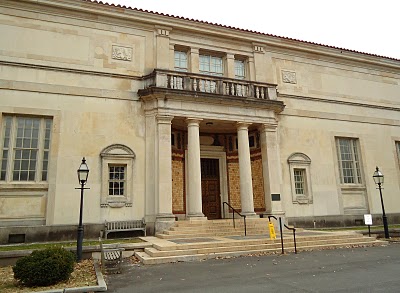
|
| Barnes Foundation |
Barnes was born in Kensington, and had a hard life as the son of a Civil War veteran who lost an arm in the war, and had a dismal time making a living as a butcher. Barnes was his fighting-spirit son, who worked his way through medical school. It was Jefferson Medical College, where I was on the faculty for decades. While it is true his patent medicine gave a permanently sickening color to the children who were treated for sinusitis, it is also true that in the form of eyedrops it prevented the transmission of syphilis to millions of newborn children. In that view, it was a real scientific contribution, although the medical profession continues to take a dim view of doctors advertising their wares. Although he was himself a failed artist, Barnes was a highly successful collector of (then) modern art and started a school with John Dewey to teach art appreciation to poor people. One by one, the local universities snubbed his wishes for an art appreciation school, and the local Philadelphia museums were pretty sniffy about his favorite artists.
In fairness to them, Barnes was probably pretty pushy in his demands. Unfavorable local reception to an exhibition which had received rave applause in Paris, convinced Barnes he was right and they were wrong. After this, Barnes developed a lasting hatred of Philadelphia and all its stuffy ways; he definitely didn't want his own impressionist art to be in Philadelphia, which would never appreciate it. While Philadelphia finally woke up to the value of Impressionist painting, Barnes never relented while he was alive. I hope I give a fair portrayal of the argument except for the politics and the legalities, that I know very little about.
But hearing the arguments, I see an entirely different moral to the saga. Ever since the inflation of the 1930s, fine art has appreciated in value, faster than the endowments to maintain the art. (That's probably a useful tip to investors, too.) It's fairly standard for a wealthy person to donate his art collection, plus a sum of money to endow the maintenance of the art. Most of the time, the size of the endowment is carefully calculated to grow at least as fast as the value of the paintings, because you have to ensure them, and pay for increased security, and increasing attendance. With the new trend toward inflation of at least 2% a year, the old premises don't work anymore, and the endowment eventually runs out. At that point, it runs into restrictions which -- to be perfectly blunt -- were created to prevent the trustees from pilfering the museum. A museum may not sell its art to pay for administrative expenses.
Consequently, The Barnes ran into a situation where it had billions of dollars worth of paintings in the basement, which it could not sell, and could not even hang in the museum because of Barnes' specifications for what went on the walls. This situation isn't going to change, because a dollar in 1913, when the Federal Reserve was created, is now scarcely worth more than a penny. And the present Fed is committed to 2% inflation, forever.
So, how about this: let the lawyers who write wills, and the Orphan's Court which administers them, insist that the art collection be divided into two parts. One would be the permanent collection, just as at present, and the other would be eligible for sale in the judgment of the Orphan's Court.
Political Parties, Absent and Unmentionable
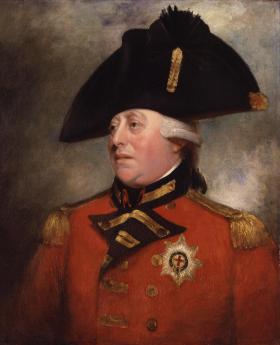
|
| King George III |
BECAUSE America had recently revolted to rid itself of King George III, the Constitutional framers of 1787 sought to construct a government forever free from one-man rule. Inefficiency could be accepted but central dictatorial power, never. It is unrealistic however to expect a wind-up toy to keep working forever, and our Constitution creates the same worry. After two centuries, some chinks have appeared.
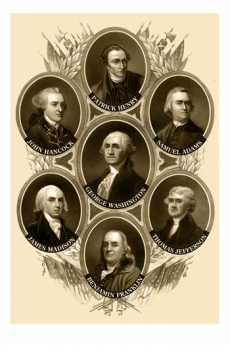
|
| Founding Fathers |
Political parties existed in 18th Century England and Europe, but the American founding fathers seem not to have worried about them much. Within ten years of Constitutional ratification, however, Thomas Jefferson had created a really partisan party which naturally provoked the creation of its partisan opposite. James Madison was slowly won over to the idea this was inevitable, but George Washington never budged. Although they were once firm friends, when Madison's partisan position became clear to him, Washington essentially never spoke to him again. Andrew Jackson, with the guidance of Martin van Buren, carried the partisan idea much further toward its modern characteristics, but it was the two Roosevelts who most fully tested the U.S. Supreme Court's tolerance for concentrating new powers in the Presidency, and Obama who recognized that the quickest way to strengthen the Presidency was to weaken the Legislative branch.
Dramatic episodes of this history are not central to present concerns, which focuses more on the largely unnoticed accumulations of small changes which bring us to our present position. Wars and economic crises induced several presidents, nearly as many Republicans as Democrats, to encourage migrations of power advantage which never quite returned to baseline after each crisis. Primary among these migrations was the erosion of the original assumption of perfect equality among individual members of Congress. A new member of Congress today may tell his constituents he will represent them ably, but when he arrives for work he is figuratively given an office in the basement and allowed to sit on empty packing cases. This is not accidental; the slights are intentional warnings from the true masters of power to bumptious new egotists, they will get nothing in their new environment unless they earn it. Not a bad idea? This schoolyard bullying is a very bad idea. If your elected representative is less powerful, you are less powerful.
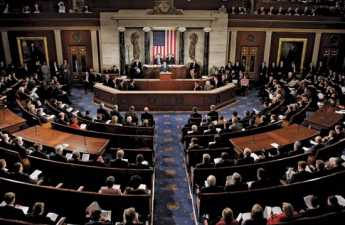
|
| Houses of Congress |
Partisan politics begins with vote-swapping, evolves into a system of concentrating the votes of the members into the hands of party leaders, and ultimately creates the potential for declaring betrayal if the member votes his own mind in defiance of the leader. The rules of the "body" are adopted within moments of the first opening gavel, but they took centuries to evolve and will only significantly change direction on those few occasions when newcomers overpower the old-timers, and only then if some rebel among the old timers takes the considerable trouble to help organize them. In the vast majority of cases, after adoption, the opportunity to change the rules is then effectively lost for two years. Even the Senate, with six-year staggered terms, has argued that it is a "continuing body" and need not reconsider its rules except in the face of a serious uprising on some particular point. Both houses of Congress place great weight on seniority, for the very good purpose of training unfamiliar newcomers in obscure topics, and for the very bad purpose of concentrating power in "safe" districts where party leaders are able to exercise iron control of the nominating process. Those invisible bosses back home in the district, able to control nominations in safe districts, are the real powers in Congress. They indirectly control the offices and chairmanships which accumulate seniority in Congress; anyone who desires to control Congress must control the local political bosses, few of whom ever stand for election to any office if they can avoid it. In most states, the number of safe districts is a function of controlling the gerrymandering process, which takes place every ten years after a census. Therefore, in most states, it is possible to predict the politics of the whole state for a decade, by merely knowing the outcome of the redistricting. The rules for selecting members of the redistricting committee in the state legislatures are quite arcane and almost unbelievably subtle. An inquiring newsman who tries to compile a fifty-state table of the redistricting rules would spend several months doing it, and miss the essential points in a significant number of cases. The newspapers who attempt to pry out the facts of gerrymandering are easily gulled into the misleading belief that a good district is one which is round and compact, leading to a front-page picture showing all districts to be the same physical size. In fact, a good district is one where both parties have a reasonable chance to win, depending for a change, on the quality of their nominee.
So that's how the "Will of Congress" is supposed to work, but the process recently has been far less commendable, and in fact, calls into dispute the whole idea of a balance of power between the three branches of government. We here concentrate on the Health Reform Bill ("Obamacare") and the Financial Reform Bill ("Dodd-Frank"), which send the same procedural message even though they differ widely in their central topic. At the moment, neither of these important pieces of legislation has been fully subject to judicial review, so the U.S. Supreme Court has not yet encumbered itself with stare decisis of its own creation.
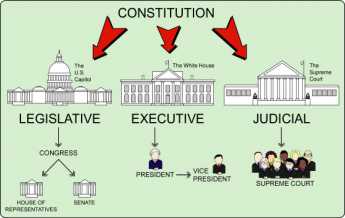
|
| Three branches of government |
In both cases, bills of several thousand pages each were first written by persons who if not unknown, are largely unidentified. It is thus not yet possible to determine whether the authors were affiliated with the Executive Branch or the Legislative one; it is not even possible to be sure they were either elected or appointed to their positions. From all appearances, however, they met and organized their work fairly exclusively within the oversight of the Executive Branch. Some weighty members of the majority party in Congress must have had some involvement, but it seems a near certainty that no members of the minority party were included, and even comparatively few members of highly contested districts, the so-called "Blue Dogs" of the majority party. It seems safe to conjecture that a substantial number either represent special interest affiliates or else party faithful from safe districts with seniority. The construction of the massive legislation was conducted in such secrecy that even the sympathetic members of the press were excluded, and it would not be surprising to learn that no person alive had read the whole bill carefully before it was "sent" to Congress. It's fair to surmise that no member of Congress except a few limited members of the power elite of the majority party were allowed to read more than scattered fragments of the pending legislation in time to make meaningful changes.
The next step was probably more carefully managed. No matter who wrote it or what it said, a majority of the relevant committees of both houses of Congress had to sign their names as responsible for approving it. Because of the relatively new phenomenon of live national televising of committee procedure, the nation was treated to the sight of congressmen of both parties howling that they were only given a single day to read several thousand pages of previously secret material -- before being forced to sign approval of it by application of unmentioned pressures enabled by the rules of "the body". When party members in contested districts protested that they would be dis-elected for doing so, it does not take much imagination to surmise that they were offered various appointive offices within the bureaucracy as a consolation. As it turned out, the legislation was only passed narrowly on a straight-party vote, so there can be a considerable possibility of its likely failure if the corruptions of politics had been set aside, with members voting on the merits. Nevertheless, since this degree of political hammering did result in a straight-party vote, it leaves the minority party free to overturn the legislation when it can. The prospect of preventing an overturn in succeeding congresses seems to be premised on "fixing" flaws in the legislation through the issuance of regulations before elections can open the way to overturn of the underlying authorization. Legislative overturn, however, is very likely to encounter filibuster in the Senate, which presently requires 40 votes. Even that conventional pathway is booby-trapped in the case of the Dodd-Frank Law. The Economist magazine of London assigned a reporter to read the entire act, and relates that almost every page of it mandates that the Executive Branch ("The Secretary shall") must take rather vague instructions to write regulations five or ten times as long as the Congressional authorization, giving the specifics of the law. The prospect looms of vast numbers of regulations with the force of law but written by the executive branch, emerging long after the Supreme Court considers the central points, years after the authorizing congressmen have had a chance to read it, and well after the public has rendered final judgment with a presidential election. The underlying principle of this legislation is the hope that it will later seem too disruptive to change a law, even though most of it was never considered by the public or its representatives.
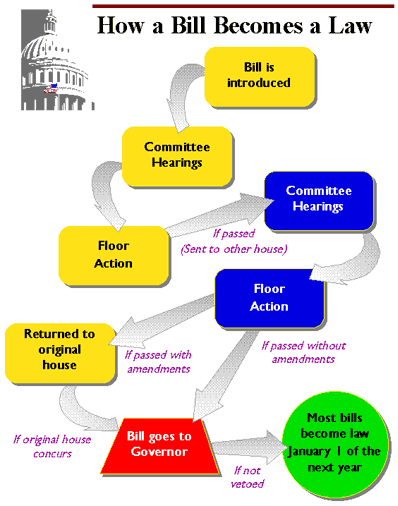
|
| Bill become a Law |
The "regulatory process" takes place entirely within the Executive branch. Congress passes what it terms "enabling" legislation, containing language to the effect that the Cabinet Secretary shall investigate as needed, decide as needed, and implement as needed, such regulations as shall be needed to carry out the "Will" of Congress. Since the regulations for two-thousand-page bills will almost certainly run to twenty thousand pages of regulations with the force of law, the enabling committee of Congress will be confronted with an impossible task of oversight, and thus will offer few objections. The Appropriations Committees of Congress, on the other hand, are charged with reviewing every government program every year and have the power to throttle what they disapprove of, by the simple mechanism of cutting off the program's funds. Members of the coveted Appropriations Committees are appointed by seniority, come from safe districts, and are attracted to the work by the associated ability to bestow plums on their home districts. By the nature of their appointment process, unworried by the folks back home but entirely beholden to the party bosses, they have the latitude to throttle anything the leadership of their party wants to throttle badly enough. The outcome of such take-no-prisoners warfare is not likely to improve the welfare of the nation, and therefore it is rare that partisan politics are allowed to go so far.
The three branches of government have become unbalanced. These bills were almost entirely written outside of the Legislative branch, and the ensuing regulations will be written in the Executive branch. The founding fathers certainly never envisioned that sweeping modification will be made in the medical industry and the financial industry, against the wishes of these industries, and in any event without convincing proof that the public is in favor. This is what is fundamentally wrong about taking such important decisions out of the hands of Congress; it threatens to put the public at odds with its government.
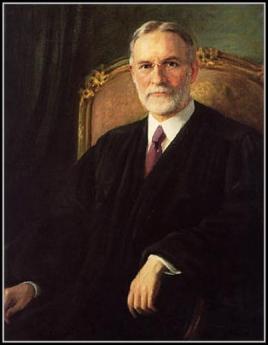
|
| Justice George Sutherland |
There is no need to go further than this, harsher words will only inflame the reaction further than necessary to justify a pull-back. And yet, the Supreme Court would do us mercy if it doused these flames; the Supreme Court needs a legal pretext. May we suggest that Justice George Sutherland, who sat on the court seventy years ago, may have sensed the direction of things, short of using a particular word. Justice Sutherland recognized that although it is impractical to waver from the principle that ignorance of the law is no excuse, it is entirely possible for a person of ordinary understanding to read law in its entirety and still be confused as to its intent. He thus created a legal principle that a law may be void if it is too vague to be understood. In particular, a common criminal may be even less able to make a serious analysis. Therefore, at least in criminal cases, a lawyer may well be void for vagueness. In this case, we are not speaking of criminals as defendants or civil cases of alleged damage of one party by a defendant. Here, it is the law itself which gives offense by its vagueness, and Congress which created the vagueness is the defendant. Since we have just gone to considerable length to describe the manner in which Congress is possibly the main victim, this situation may be one of the few remaining ones where a Court of Equity is needed. That is, an obvious wrong needs to be corrected, but no statute seems to cover the matter. The Supreme Court might give some thought to convening itself as a special Court of Equity, on the special point of whether this legislation is void for vagueness.
We indicated earlier that one word was missing in this bill of particulars. That would be needed, to expand the charge to void for intentional vagueness, an assessment which is unflinchingly direct. It suggests that somewhere in at least this year's contentious processes, either the Executive Branch or the officers of the congressional majority party, or both, intended to achieve the latitude of imprecision, that is, to do as it pleased. Anyone who supposes the general run of congressmen voluntarily surrendered such latitude in the Health and Finance legislation, has not been watching much television. Given the present vast quantity of annually proposed legislation, roughly 25,000 bills each session, the passage of a small amount of vague legislation might only justify voiding individual laws, whereas an undue amount of it might additionally justify a reprimand. However, engineering laws which are deliberately vague might rise to the level of impeachment.
40 Blogs
Robert Adams, Jr.
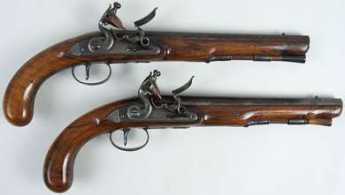 Robert Adams Jr fought what is thought to be the last duel in Philadelphia. His opponent was the dashing eccentric J. William White M.D., who is much better known. Adams, however, was later a State legislator, an Ambassador to Brazil, and a U. S. Congressman.
Robert Adams Jr fought what is thought to be the last duel in Philadelphia. His opponent was the dashing eccentric J. William White M.D., who is much better known. Adams, however, was later a State legislator, an Ambassador to Brazil, and a U. S. Congressman.
Philadelphia Gardens
 Philadelphia loves its gardens, particularly boxwood and azalea.
Philadelphia loves its gardens, particularly boxwood and azalea.
Main Line School Night
 There are a lot of continuing education courses, but few are as successful as Main Line School Night, with 14,000 students, hardly any of whom need education.
There are a lot of continuing education courses, but few are as successful as Main Line School Night, with 14,000 students, hardly any of whom need education.
The Savoy and the Orpheus
 Two amateur singing groups are fixtures of the Philadelphia musical, and social, scene. Their success is partially due to the high costs of union labor.
Two amateur singing groups are fixtures of the Philadelphia musical, and social, scene. Their success is partially due to the high costs of union labor.
WRTI, Classical Music and Jazz
 For a city with such a strong musical presence, it is surprising that Philadelphia has only one classical music radio station.
For a city with such a strong musical presence, it is surprising that Philadelphia has only one classical music radio station.
Cecilia Beaux, Portraitist of the Grand Manner
 She has turned out to be our finest woman portrait painter, in spite of some professional friction with Mary Cassatt.
She has turned out to be our finest woman portrait painter, in spite of some professional friction with Mary Cassatt.
Eakins and Doctors
 Philadelphia's art world joined its medical world in reacting fiercely to Jefferson Medical College's sale of the best painting by the best artist of Philadelphia's Nineteenth century.
Philadelphia's art world joined its medical world in reacting fiercely to Jefferson Medical College's sale of the best painting by the best artist of Philadelphia's Nineteenth century.
French Philadelphia
 The French and the English fought for centuries; colonies seeking independence played one against the other. Our cooking, clothing, and architecture went French when we favored France; traces of many periods still reflect that fact.
The French and the English fought for centuries; colonies seeking independence played one against the other. Our cooking, clothing, and architecture went French when we favored France; traces of many periods still reflect that fact.
The Garden Show Evolves
 Exhibitors at the Philadelphia Garden Show have gradually evolved from amateurs to nurserymen, and from nurserymen to florists.
Exhibitors at the Philadelphia Garden Show have gradually evolved from amateurs to nurserymen, and from nurserymen to florists.
The Man Behind the Mann
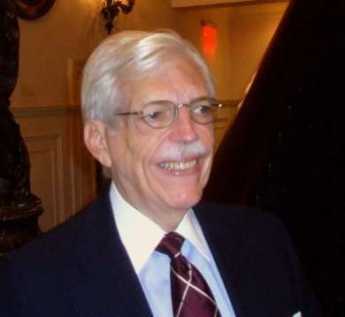
German Origins of the Philadelphia Orchestra
 Provoked by catastrophes in distant Europe, each of the four waves of German immigration to America brought us a different musical style. Since more Americans are of German ancestry than any other, there was always a large audience for new German musical styles.
Provoked by catastrophes in distant Europe, each of the four waves of German immigration to America brought us a different musical style. Since more Americans are of German ancestry than any other, there was always a large audience for new German musical styles.
Curtis Center
 The Curtis Institute of Music is tearing down several buildings on Locust Street in order to become bigger and better.
The Curtis Institute of Music is tearing down several buildings on Locust Street in order to become bigger and better.
Geckos: Academy of Natural Sciences brings Mini Dinosaurs
 Philadelphia's Academy of Natural Sciences introduced the world to dinosaurs, and now introduces us to a miniature version.
Philadelphia's Academy of Natural Sciences introduced the world to dinosaurs, and now introduces us to a miniature version.
Plays and Players, Haddonfield Version
 This year the Haddonfield Plays and Players celebrate their 75th anniversary, with an outstanding production of Anything Goes, by Cole Porter Y'13.
This year the Haddonfield Plays and Players celebrate their 75th anniversary, with an outstanding production of Anything Goes, by Cole Porter Y'13.
Benjamin Franklin, Prophet
 Ben Franklin was not exactly religious, but for one dominating American theme, Poor Richard is the prophet.
Ben Franklin was not exactly religious, but for one dominating American theme, Poor Richard is the prophet.
Children's Scholarship Fund (1)
 The Right Angle Club has decided to make donations to the Children's Scholarship Fund of Philadelphia..
The Right Angle Club has decided to make donations to the Children's Scholarship Fund of Philadelphia..
Christmas Reflections
 It once was a tradition to go back to the big city for Christmas shopping..
It once was a tradition to go back to the big city for Christmas shopping..
Puritan Boston & Quaker Philadelphia
 The University of Pennsylvania Sociology professor E. Digby Baltzell drew attention to the strong persistence of earlier elite influences, using Philadelphia's Quakers and Boston's Puritans as prime examples.
The University of Pennsylvania Sociology professor E. Digby Baltzell drew attention to the strong persistence of earlier elite influences, using Philadelphia's Quakers and Boston's Puritans as prime examples.
Urban Transportation
 The industrial revolution made cities grow, and thus made mass transit desirable. The flight to the suburbs then made mass transit attractive only to urban politicians.
The industrial revolution made cities grow, and thus made mass transit desirable. The flight to the suburbs then made mass transit attractive only to urban politicians.
Paying for College I
 A service economy needs more education past high school. Soaring college tuition costs imply a supply shortage, and hence we need more colleges.
But cheaper ones.
A service economy needs more education past high school. Soaring college tuition costs imply a supply shortage, and hence we need more colleges.
But cheaper ones.
Paying For College - II
 As college education strives to be universal, forcing a few prosperous students to subsidize many needy ones becomes unsustainable. Colleges must devise better tuition systems before somebody else does it for them.
As college education strives to be universal, forcing a few prosperous students to subsidize many needy ones becomes unsustainable. Colleges must devise better tuition systems before somebody else does it for them.
What's Different About Kosher ?
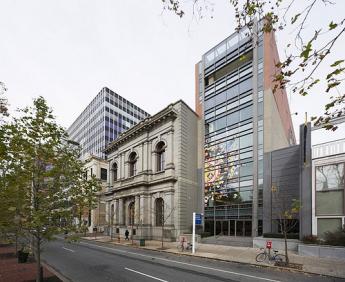 A recent conference at the Chemical Heritage Foundation examined the perplexing question of just what is signified by Kosher designation of food. Most of the curious audience were themselves Jewish.
A recent conference at the Chemical Heritage Foundation examined the perplexing question of just what is signified by Kosher designation of food. Most of the curious audience were themselves Jewish.
Cushman Club for Lonesome Actresses
 One of the ancient Camac Street clubs has closed its doors, to become a charitable foundation.
One of the ancient Camac Street clubs has closed its doors, to become a charitable foundation.
Thieves of Baghdad
 American troops recovered most of the antiquities looted from the Baghdad Museum, tracing many of them through the international black market. The museum turns out to have been secretly a private treasury.
American troops recovered most of the antiquities looted from the Baghdad Museum, tracing many of them through the international black market. The museum turns out to have been secretly a private treasury.
L. Stokowsi and the Philadelphia Orchestra
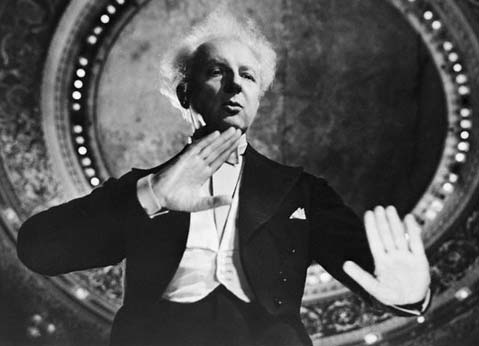 When a great institution experiences trouble, it can often be traced to a reluctance to change from what was once a winning formula.
When a great institution experiences trouble, it can often be traced to a reluctance to change from what was once a winning formula.
Frank Furness (1):PAFA
 An art museum contains a lot of art. It should itself be a work of art if it can be.
An art museum contains a lot of art. It should itself be a work of art if it can be.
Gum
 Perhaps we should refer to bubble gum as Santa Ana's revenge.
Perhaps we should refer to bubble gum as Santa Ana's revenge.
America's New Theater Capital
 New York's professional theaters have mostly become a tourist industry. The new capital of legitimate theater in America is -- Philadelphia.
New York's professional theaters have mostly become a tourist industry. The new capital of legitimate theater in America is -- Philadelphia.
Mennonites: The Pennsylvania Swiss
 Mennonite Pennsylvania Dutchmen actually came here from Switzerland. The book of their religious martyrs is more than a foot thick since they practice non-resistance, a belief significantly more pacifist than non-violence. Nevertheless, they prosper abundantly in Montgomery County.
Mennonite Pennsylvania Dutchmen actually came here from Switzerland. The book of their religious martyrs is more than a foot thick since they practice non-resistance, a belief significantly more pacifist than non-violence. Nevertheless, they prosper abundantly in Montgomery County.
History of the Mennonites
Although an occasional member is irked by the world's neglect of his church and speaks out in annoyance, the Mennonites, in general, prefer to do good, unnoticed.
Christmas Reflections (Podcast)
George Fisher narrates one of his favorite reflections, "Christmas Reflections," on the changing face of Christmas and Christmas shopping in Philadelphia.
Perpetuities
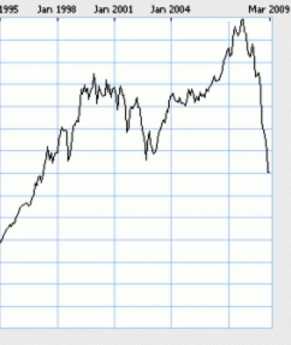 Although most founders of institutions look far into the future, the fact is comparatively few corporations, for-profit or not-for-profit, last longer than seventy-five years.
Although most founders of institutions look far into the future, the fact is comparatively few corporations, for-profit or not-for-profit, last longer than seventy-five years.
Morris Upended by a Nobody
 Adjusting to winning the Revolutionary War was almost as painful as losing it would have been. Especially for Robert Morris.
Adjusting to winning the Revolutionary War was almost as painful as losing it would have been. Especially for Robert Morris.
Children Playing With Matches

Statement of Accounts, March 1785
 At the conclusion of Robert Morris' term of office as Financier, he did an unusual thing by submitting a complete accounting of his term. As things turned out, it was a good thing he did so.
At the conclusion of Robert Morris' term of office as Financier, he did an unusual thing by submitting a complete accounting of his term. As things turned out, it was a good thing he did so.
One Big Brewerytown
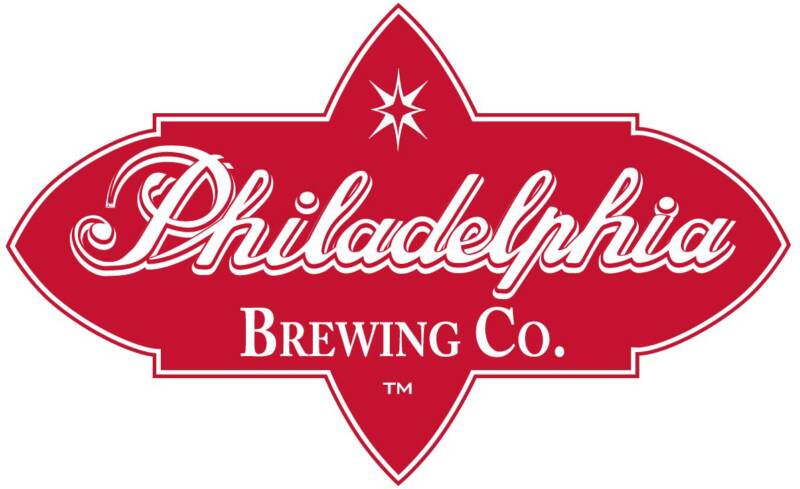 It's hard to realize that Philadelphia was the center of beer production in America until fairly recently. It's been argued it is still the center of consumption.
It's hard to realize that Philadelphia was the center of beer production in America until fairly recently. It's been argued it is still the center of consumption.
Musical Theatre at the 11th Hour
 There are 1200 theatrical companies in Philadelphia, but only one devoted to musicals. Does that say something about the audiences, the unions, or the musicians?
There are 1200 theatrical companies in Philadelphia, but only one devoted to musicals. Does that say something about the audiences, the unions, or the musicians?
Adoption
 Although the Romans frequently adopted children, the practice died out in the 6th century, and only became common a thousand years later. Curiously little has been written about this matter, so speculation is probably unwise.
Although the Romans frequently adopted children, the practice died out in the 6th century, and only became common a thousand years later. Curiously little has been written about this matter, so speculation is probably unwise.
Barnes Foundation -- Drawing a New Moral
 Inflation makes for a new slant on the saga of the Barnes Foundation.
Inflation makes for a new slant on the saga of the Barnes Foundation.
Political Parties, Absent and Unmentionable
 Our Constitution is much praised for exquisitely balancing power between the three branches of government. It would even be an achievement to require two centuries to find a way to unbalance them.
Our Constitution is much praised for exquisitely balancing power between the three branches of government. It would even be an achievement to require two centuries to find a way to unbalance them.